About Wildlife Artist of the Year
When BBC Wildlife Magazine teamed up with the David Shepherd Wildlife Foundation (DSWF) to support its internationally renowned annual competition and exhibition, we knew the standard was going to be high. In the end, there were a whopping 2,307 entries from artists in 70 different countries.
Since launching in 2008, the annual event has attracted more than 12,500 entries and generated more than £1.2m in sales. Finalists shortlisted are invited to exhibit and sell their artworks as part of an annual exhibition, with 50% of the proceeds from all sales supporting the vital conservation work of DSWF.
It also plays an integral role in helping to maintain David Shepherd’s legacy of ‘The Art of Survival’ – a concept on which DSWF was founded. Using the power of art to celebrate wildlife, support awareness and raise vital funds for species protection is at the heart of DSWF.
In these challenging times, DSWF is bringing Wildlife Artist of the Year 2021 to the global stage through an interactive virtual gallery. You will be able to enjoy the breathtaking beauty of wildlife art, from your own home, through the DSWF immersive 3D gallery space from 26 May. Everyone that signs up to attend the virtual exhibition will also be able to sign up for a free download of BBC Wildlife Magazine's May issue (pictured below).
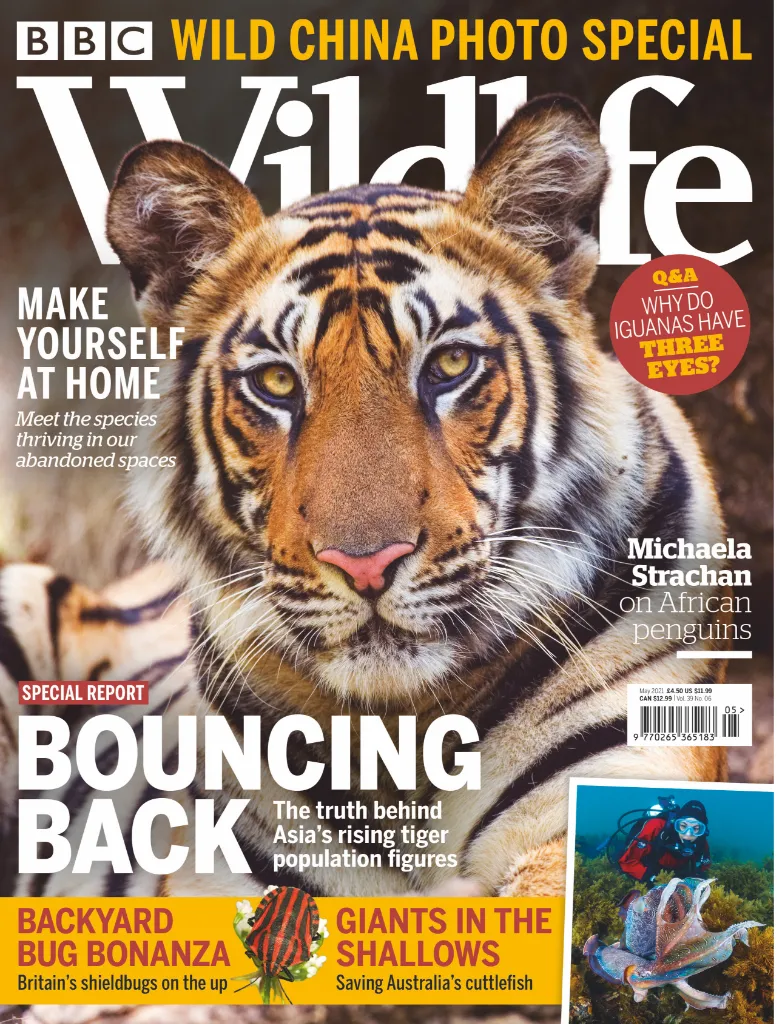
Once you've browsed the virtual exhibition, it's time to have your say and vote for your favourite piece in the BBC Wildlife Magazine People's Choice Award. You can only submit one nomination from over 260 pieces of artwork, so make it count! Everyone who submits a nomination for this year's competition will be entered into a prize draw to win a free DSWF adoption pack.
Submit your nomination on the DSWF website.
To view the images as a slideshow, click on the arrows in the top right hand corner of the images below.
Overall winner
Orcas, Blackfish Sound, by Darren Rees
Artwork medium: Acrylic painting.
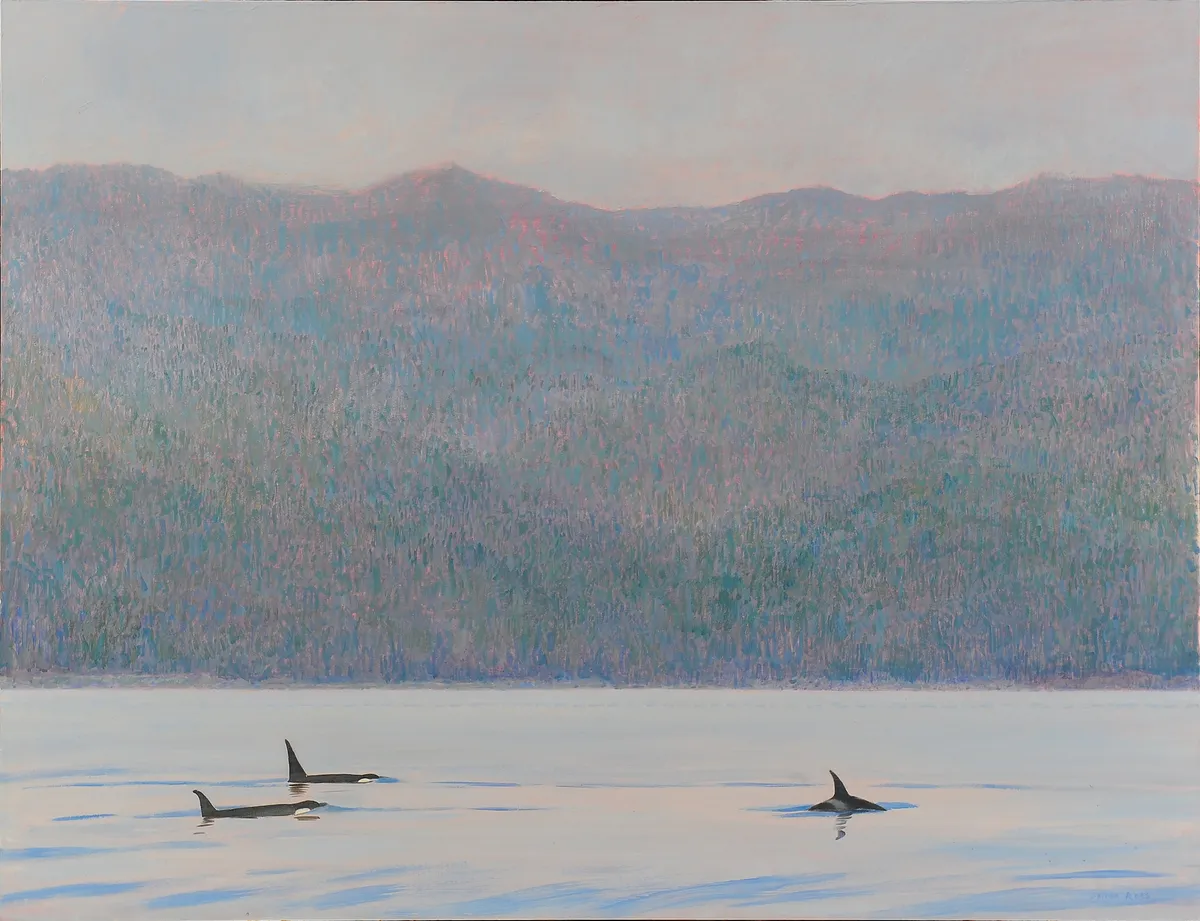
The inspiration for this painting came after watching orcas in British Columbia, Canada.
Judges' comments
Melanie Shepherd: “This remarkable painting by Darren, as always, captures the atmosphere and scale of the environment he paints. The gentleness of the orcas swimming by such a spectacular backdrop reminds us of the beauty of our planet and how vitally important both land and ocean are to our very survival.”
Hazel Soan: “That a painting less than a metre wide can be filled with so much space is the reason this painting is a winner. In its beguiling simplicity it speaks of the vastness of the planet and the smallness of its creatures, even those as large as whales. It is filled with fragility and tenderness, hope and promise, wrapped in a quiet undercurrent of warning, whispering that we must do everything we can to look after this precious jewel.”
Gary Hodges: “Such a brilliant painting, filled with exquisite, subtle colours creating a deceptively simple composition.”
Overall runner-up
Fly By, by Stella Mays
Artwork medium: Pastel on board.
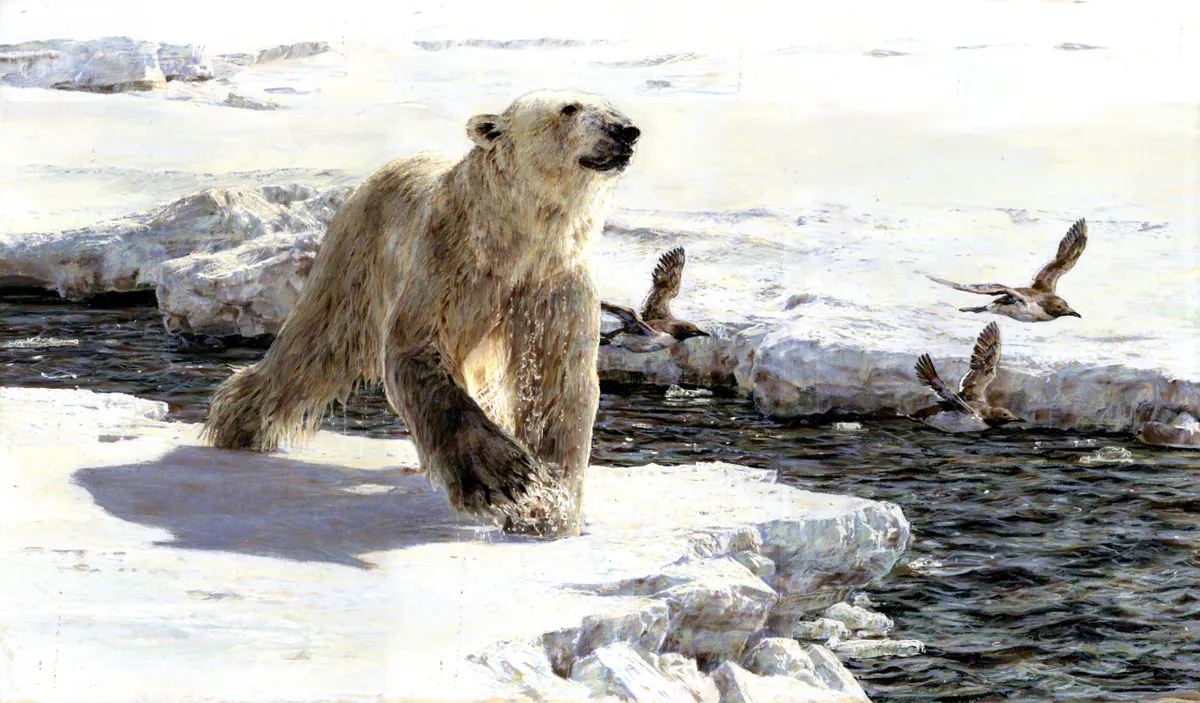
Judges' comments
Melanie Shepherd: “This wonderful image, captured in such detail by Stella, of the polar bear on the ice brings home the fragility of the situation faced by these magnificent creatures. Her attention to detail and atmosphere is truly brilliant. A worthy runner up.”
Hazel Soan: “Stella Mays is a master of pastel painting. This painting reinforces her immense skill, and the execution of the subject and the setting speaks clearly for itself. This is not only a superb composition overall but every square inch is a joy to behold. Look closely at the criss-crossing pastel marks, absorb the colours and the energy, and you realise that you are in the presence of a consummate artist.”
Mandy Shepherd: “Stella Mays never fails to impress and this painting is no exception. She is a superb technician and has created a beautiful and ultimately moving composition. A very worthy runner up of this competition and this result is so well deserved.”
BBC Wildlife Magazine Editor's Choice
Banquise, by Pascal Chesneau
Artwork medium: A sculpture made from shaped, welded metal.
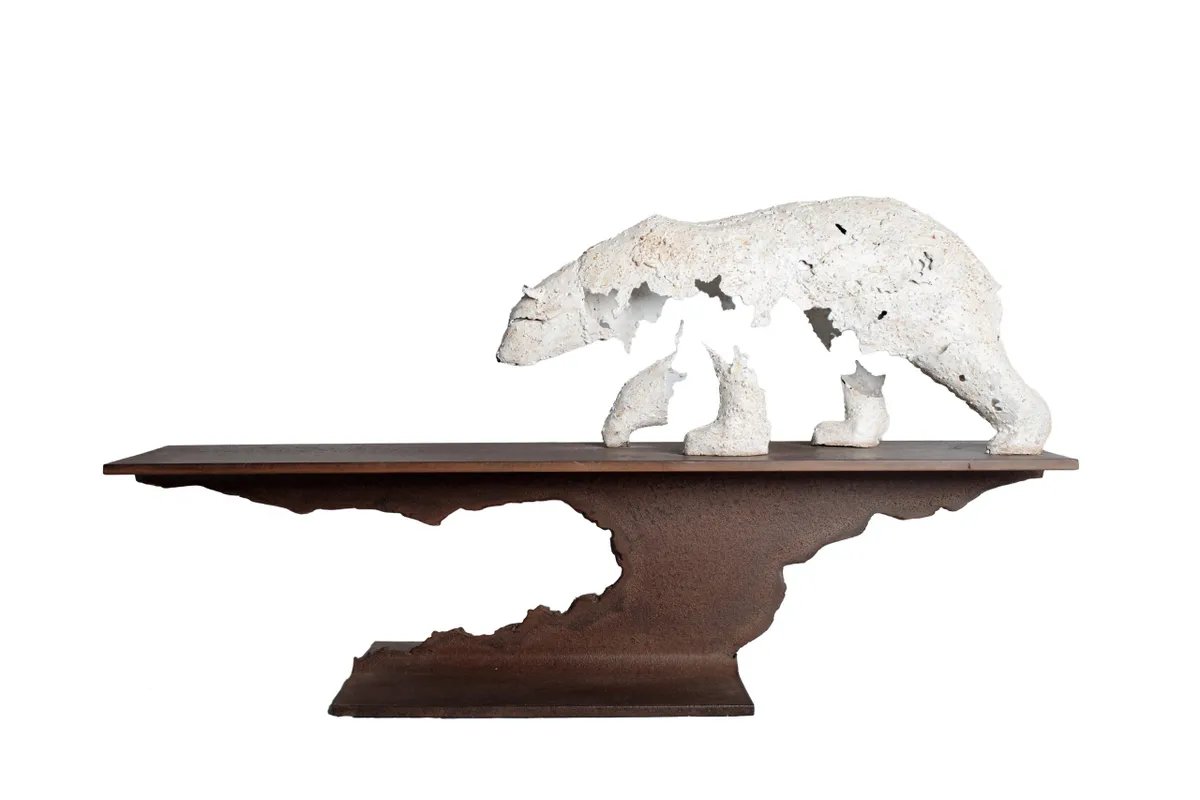
Judge's comment
Paul McGuinness: “A beautiful and skilful work that demands attention, celebrating its subject while provoking a powerful reaction to the reality of their plight. The longer I gazed through the gaps where the bear should have been, the more I was struck by a brutal vision of these mighty animals disappearing from our frozen north.”
Animal Behaviour category winner
Animals, like humans, have complex personalities and behaviours and show a wide range of emotion, intellect and sentience. Whether showing incredible skill in seeking food, demonstrating protective instincts for their young, engaging in a unique mating performance or simply relaxing in the sun, every creature will display individuality and character. The Animal Behaviour category welcomes artworks that exhibit a true understanding of animal behaviour, capturing moments that might be humorous, tragic, aggressive, or simply a part of their daily routine.
Father & Son, by Szilvia Mate
Artwork medium: Graphite and coloured pencil
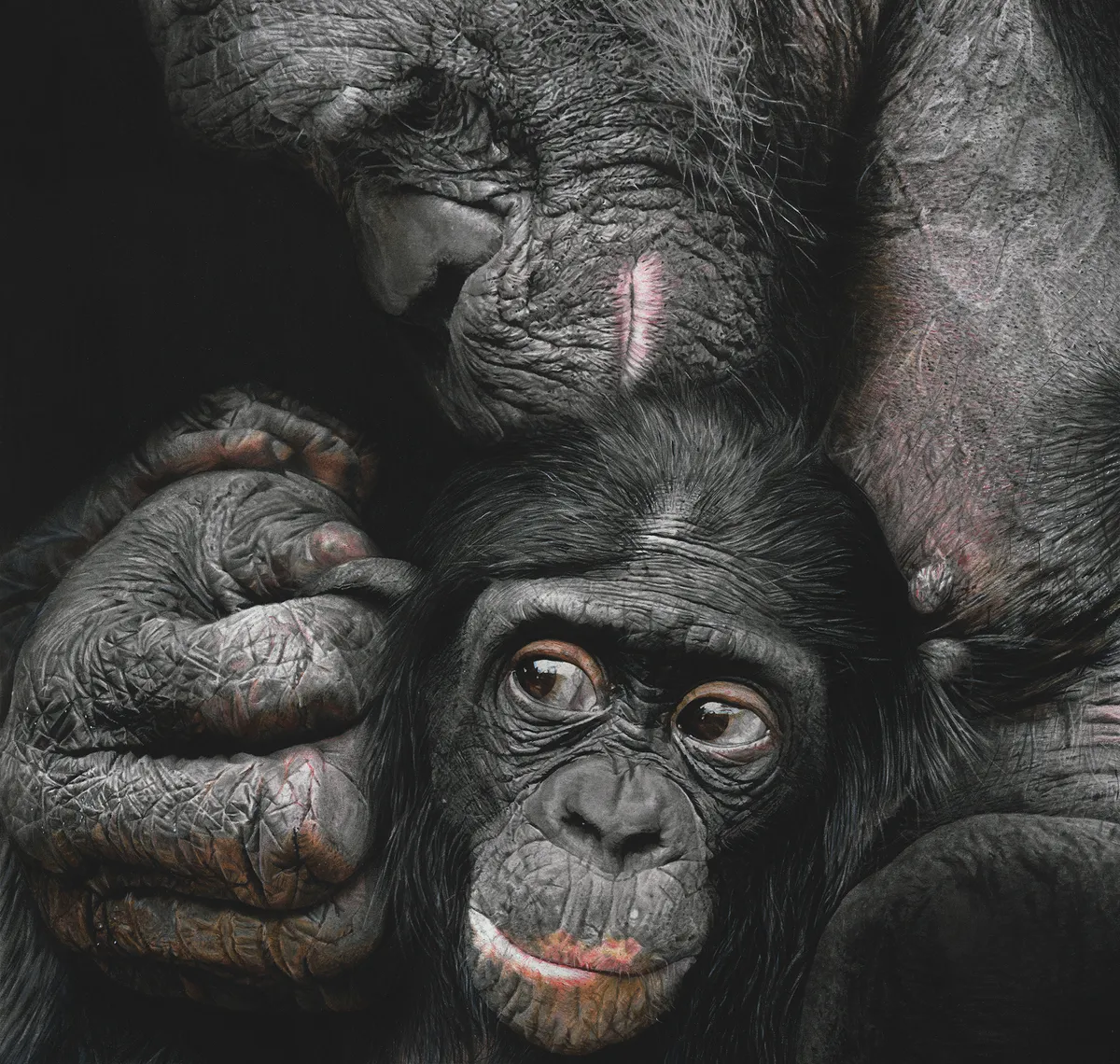
Bonobos are a species who are capable of showing a wide range of what were long held as human-specific feelings and emotions, such as sensitivity, patience, compassion, kindness, empathy and altruism.
These endangered great apes who make love…not war! They have a reputation for being the peaceful, free-loving hippies of the wild world. They love...they love each other with such helpless abandon.
If we just look at this picture...we all feel what love is, what love should be between a father and his son. We humans could and should learn from them.
Judges' comments
Melanie Shepherd: “This brilliant drawing by Szilvia of chimps captures the very gentle anthropomorphic relationship between the two animals. It is an extremely accomplished piece of artwork.”
Gary Hodges: “There is such immense feeling of love exuding from this magnificent drawing of our close relatives.”
Earth's Wild Beauty category winner
Our planet is an inspiring tapestry of contrasting habitats and landscapes, providing homes to a host of different animals, plants, trees and insects. Human beings share this planet with a huge variety of species and everyday moments of beauty occur as the land and wildlife that lives within it adapts to survive the extremes of nature. The Earth’s Wild Beauty category is a celebration of Earth’s wild landscapes, seascapes and all that live in them.
5th Position, by Guy Combes
Artwork medium: Oil and acrylic on canvas
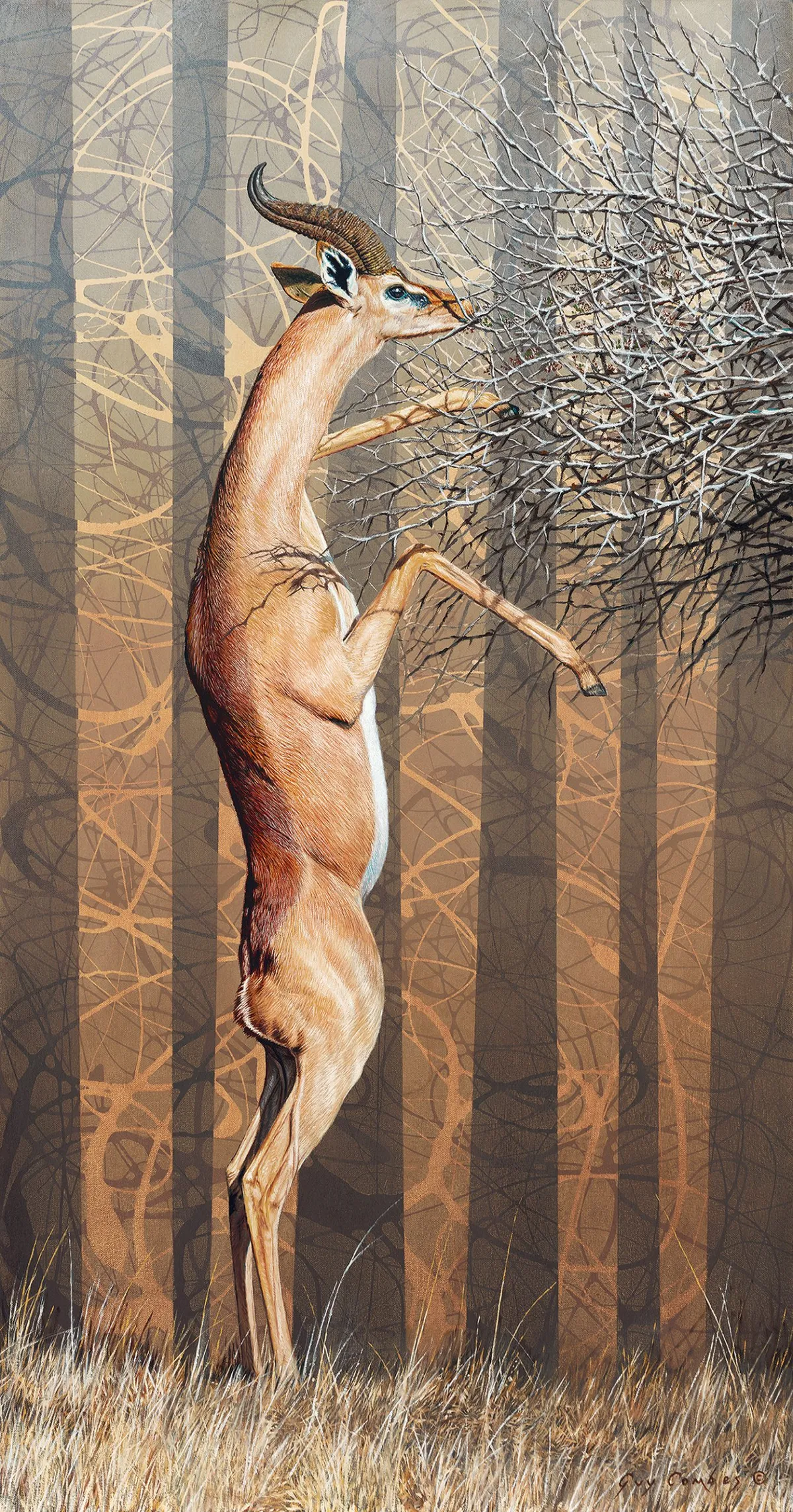
Male Gerenuk, Location: El Karama, Kenya.
Judges' comments
Melanie Shepherd: “It is so unusual to see this lesser known but exquisite animal as the main subject of a painting and Guy's background and ability to catch its unique way of feeding results in a truly wonderful portrait.”
Jamie Rountree: “This work is wonderful, interweaving colours and designs into the subject matter of showing animal behaviour. The reaching neck and body lead the eye up and down the painting, willing the subject on to get that delicious, tasty morcel at the top.”
Facing Extinction category winner
Running Towards Extinction, by Cole Stirling
Artwork medium: Charcoal drawing.

This piece explores the fragility of our natural world. I felt tigers, being a particularly iconic species and one of the many that are on the brink, would make an ideal subject for the artwork I had in mind. I hoped to produce a dynamic yet thought provoking piece, creating a triptych of the big cat, running, in profile, and disappearing ever more with each frame.
Judges' comments
Melanie Shepherd: “As well as being a truly beautiful pencil triptych this tiger drawing really portrays the very powerful message that tigers genuinely are running towards extinction.”
Hazel Soan: “This is a well executed artwork of a familiar theme, but whilst many wildlife artists use a partially incomplete or disappearing image to hint at extinction, Cole has incorporated movement into the narrative in such a successful way that it implores us to take note: “Look" he says, "the vanishing is happening before your very eyes”, and he urges us to respond lest the next panel be blank in the blink of an eye.”
Mandy Shepherd: A stunning image and on every level an appropriate category winner. Its black and white format and fine execution has tremendous impact. For me it generates a truly emotional response for the animal itself.
Human Impact Category winner
In memory of Ingrid Beazley – for artists aged 16 to 22 years of age.
When the Whale Sang, by Alicia Hayden
Artwork medium: Black biro on card.
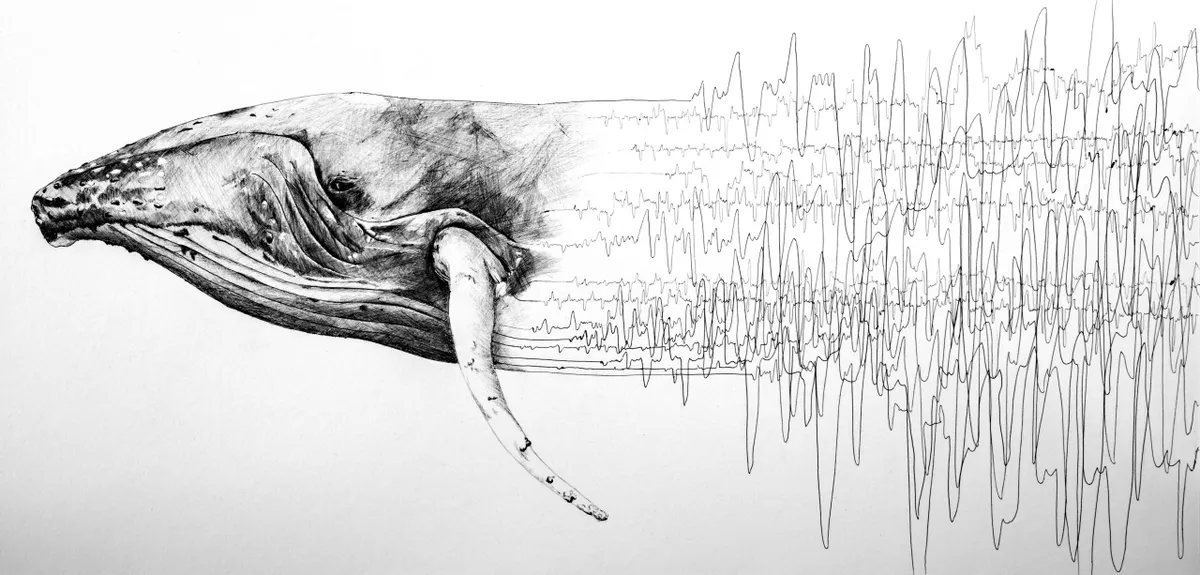
I created "When the Whale Sang" because I wanted to demonstrate the impact of anthropogenic noise pollution on whales, and how it is harming their populations. I decided to fragment the whale into sonar noise waves to illustrate the connection between noise pollution and cetaceans.
I want to convey the message that we must take action to minimise levels of noise pollution in our oceans, before there is irreversible damage to marine wildlife.
Judge's comments
Martin Aveling: "This artwork truly sang to us. The issue of anthropogenic noise pollution is not widely known, but it affects all manor of species from dwarf mongooses to whales. Effective wildlife artivism tows a line between beauty and horror, where thought is provoked and messages start to resonate in the mind of the beholder. In this instance we were hooked in by a beautifully executed drawing of a whale, but our hearts soon turned cold as it disintegrated into a cacophony of increasingly erratic sound wares. A perfect metaphor for disturbances in communication caused by increased human activity on our oceans.”
Into The Blue category winner
Covering 75% of our planet and essential to all life on earth, fresh water and salt water are home to some of the most unusual, diverse, mysterious and incredible creatures. Due to pollution, particularly plastic, our oceans are struggling to support life. The Into the Blue category features artworks that illustrate the wonderful world of water – be it ocean, seashore, wetland, river or stream – and the incredible animals and landscapes within it.
Blue Squadron, by Nick Oneill
Artwork medium: Acrylic and high gloss resin on aluminium.
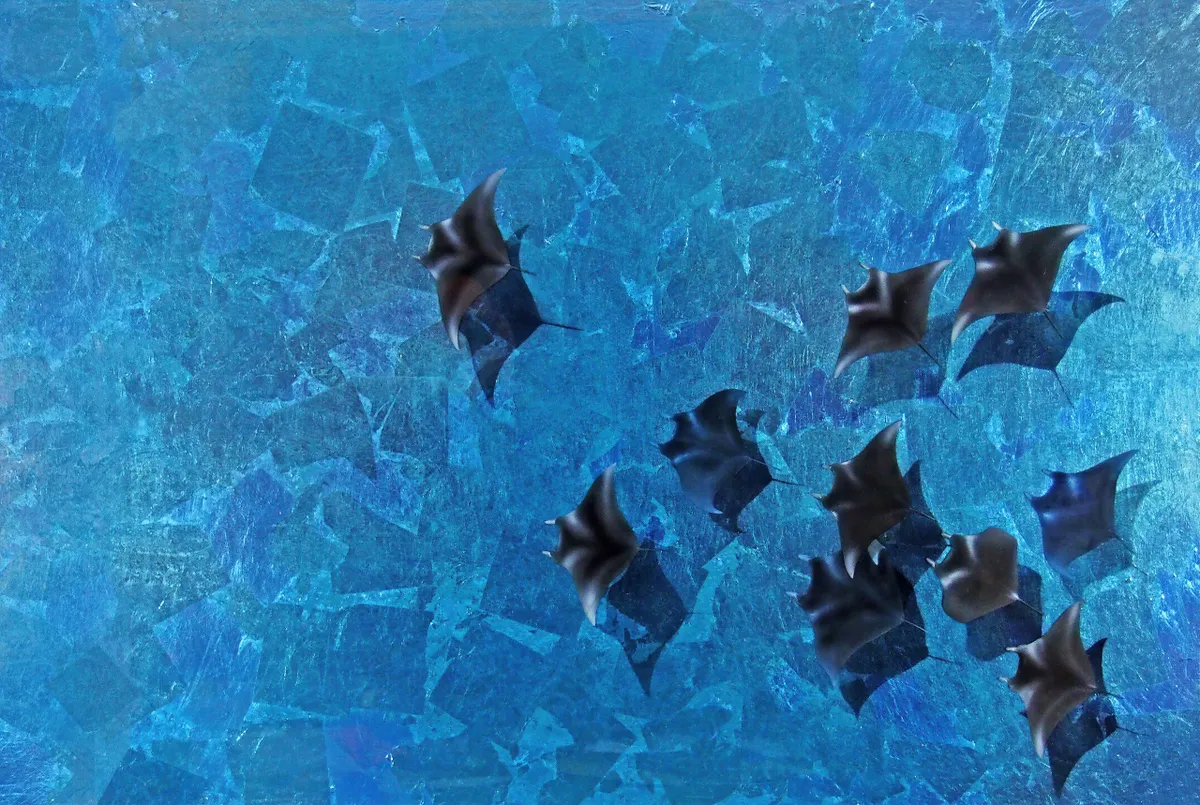
A multi layered acrylic and resin piece depicting a shoal of Manta rays gliding over a textured metal leaf seabed.
Judges' comments:
Melanie Shepherd: “As always, Nick has captured the excitement and energy of his subject in this wonderful work featuring the grace of this squadron of manta rays.”
Mandy Shepherd: “A hugely effective image and such a spontaneous and technically perfect artwork. Once again Oneil proves his expertise in his use of mixed medium and originality.”
Urban Wildlife category winner
Many species live side by side with city-dwelling humans without ever really being noticed and, within a harsh city landscape, a fascinating world of wildlife can be uncovered if only the time is taken to search for it. The Urban Wildlife category welcomes entries in an urban setting or depicting the city life of animals and plants, demonstrating a contrast and harmony between wild and urban life.
Who Invited Him? by Shannon Reynolds
Artwork medium: Original oil painting on panel.
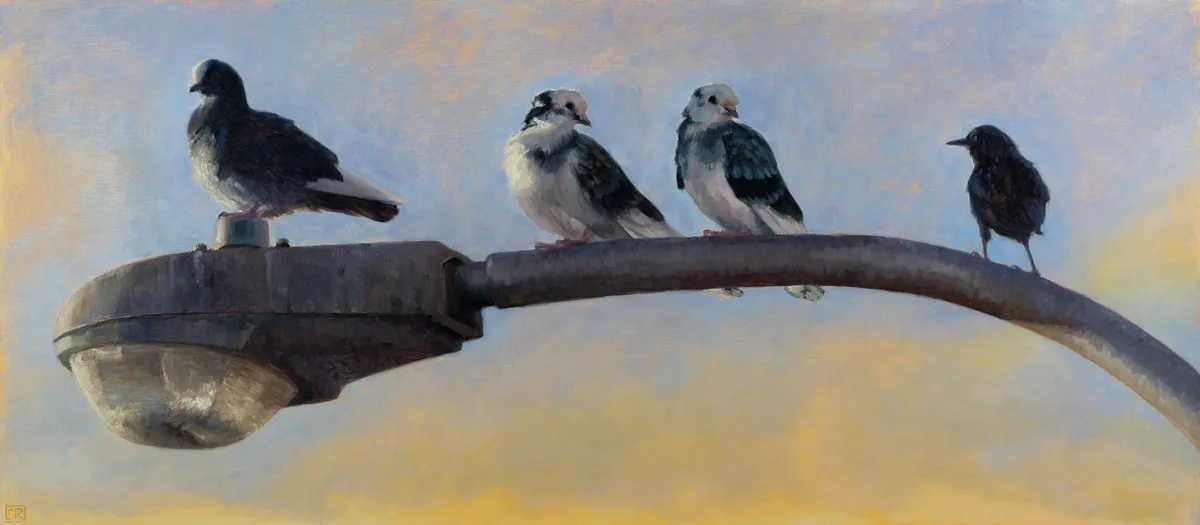
Urban pigeons regard a starling interloper on their carefullly guarded lamppost perch. Since I first composed this painting, the sodium lights have been witched out for sleek LEDs, but the pigeon flock has remained.
Judges' comments:
Melanie Shepherd: “This is a simple yet wonderful painting of a common subject made truly beautiful and the artist captures the humorous animosity between these two species.”
Hazel Soan: “This exceedingly pleasing painting exudes charm, light and wit, and turns a mundane streetlamp and its ordinary visitors into celebrities. Conservationists might not put pigeons at the top of their list but this successful rendition reminds us that every creature is valuable and that humans and wildlife can live alongside each other successfully.”
Wings category winner
The wonderful world of winged creatures is diverse, complex and fascinating. Birds, bees, butterflies and bats all experience the planet from a different perspective, soaring above our oceans, crossing vast desert plains and making their homes in unusual locations. The Wings category shows the extraordinary variety of winged wildlife on our planet, including birds and insects, in-flight or at rest.
Migration, by Matthew Polluk.
Artwork medium: Painting in metallic paint, pen, ink and 18ct lemon gold leaf.
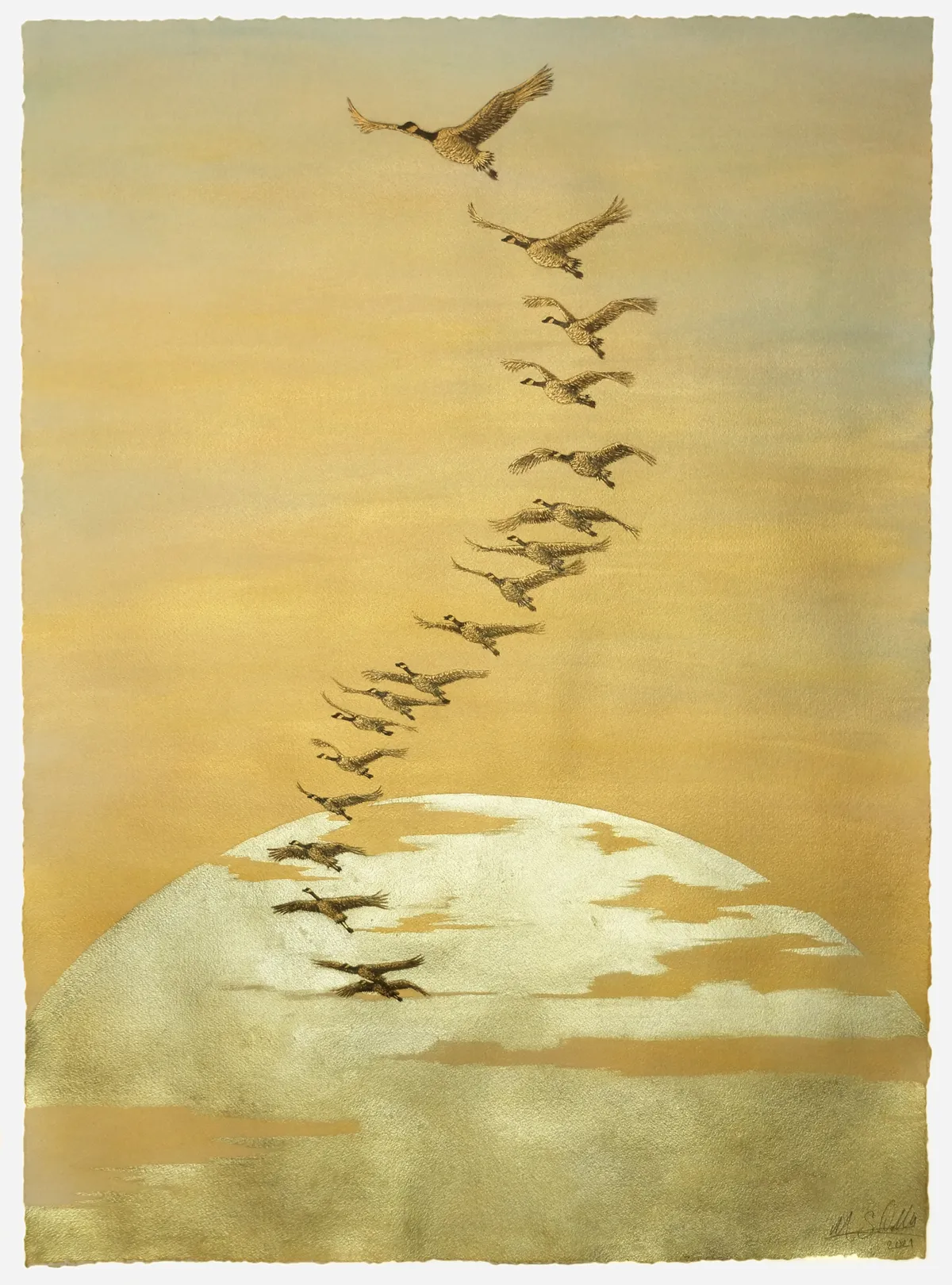
As the warm sun sets on a waning summer haze, birds take flight in search of warmer days. 'Migration' captures the phenomenal spectacle of the annual geese migration as they journey thousands of miles to warmer climates, and evade the bitter thores of winter in the northern hemisphere.
While many geese adopt the stereotypical V-formation during flight, some species, such as Brent geese, migrate in family groups and often fly in wavering lines. 'Migration' captures thisparticular animal behaviour and the beautiful aerial art it creates through their spontaneously synchronised flight formation. As well as evoking themes of change, hope and adventure, 'Migration' reminds us of the cycle of life and the importance of adaptability to constant change, but also the significance of family, unity and togetherness.
Judges' comments:
Melanie Shepherd: “Matthew has captured the wonderful sight of a skein of geese in such a unique and unusual way and the image draws the viewer inwards to this incredible view of our planet that we must protect.”
Mandy Shepherd: “I absolutely love this piece. It is different, it is wholly effective. Polluk is undoubtedly a highly skilled artist and has created a magnificent almost mythical composition.”
Elizabeth Hosking Prize For Watercolour winner
Trapped, by Jungi Jang
Artwork medium: Watercolour, acrylic and coloured pencil.
(Jungi entered the Human Impact category)
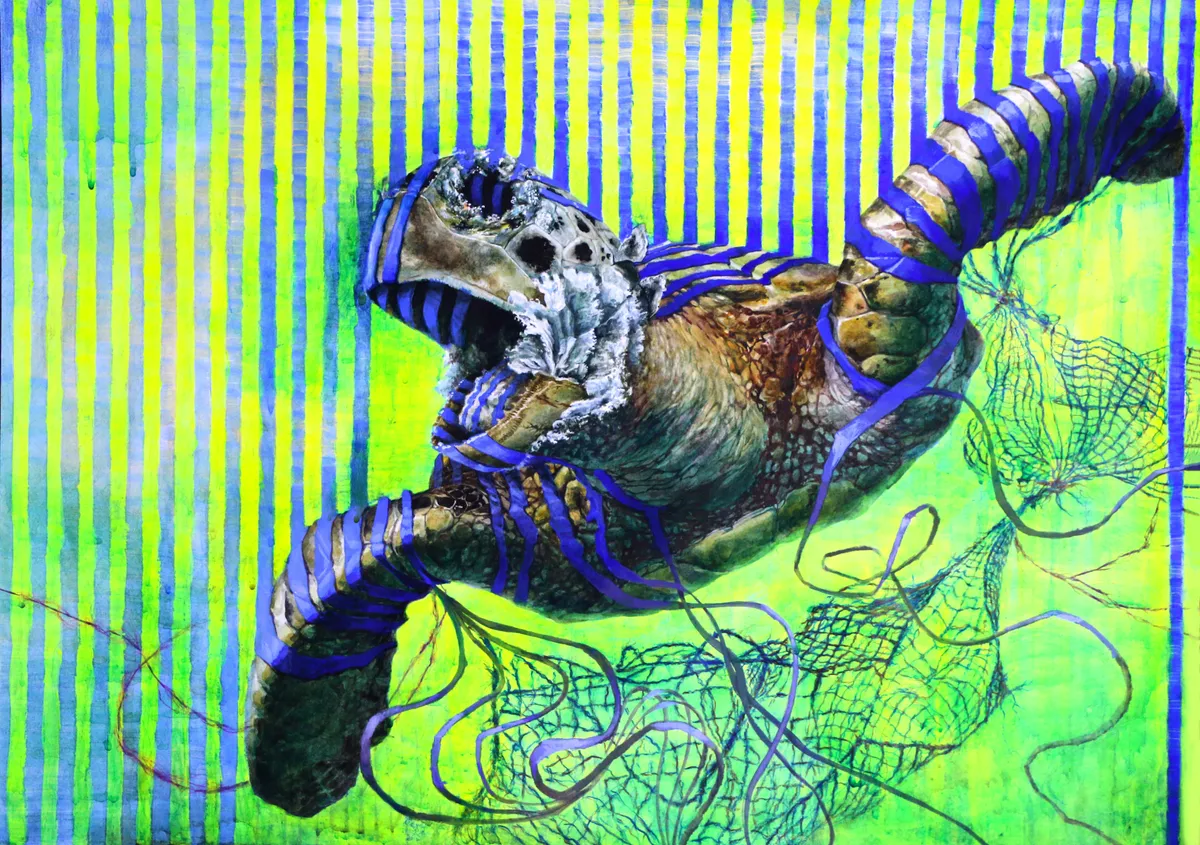
It is undeniable that many mistakes have been made by humans so far and more mistakes will transpire during their lifetime. Therefore, it is important to rectify these wrongdoings along the way.
The marine turtle representatively exemplifies underwater creatures that fatally suffer as a result of unconscious human behaviour. It is alarming to witness ignorant people contaminating our ocean by dumping insoluble wastes in the water. Neon hues allude to artificial substances, and blue rays display a confined underwater environment. Turquoise lines sorrowfully transform into a fishnet that pulls back and drastically cuts down marine mammals' lifespan.
Judge's comment:
Elizabeth Hoskin: "This is a well painted and imaginative watercolour, beautifully executed. The technique and colouring encapsulate both the abstract and the figurative in a clever image. Not only is this painting a striking work of art, but it carries an important message about our stewardship of the planet to its audience and thereby also captures the essence of DSWF’s purpose on Earth.”
Highly Commended
Homeless in Borneo, by Robert Buchanan
Artwork medium: Graphite and charcoal on Lambeth cartridge paper 370gsm.
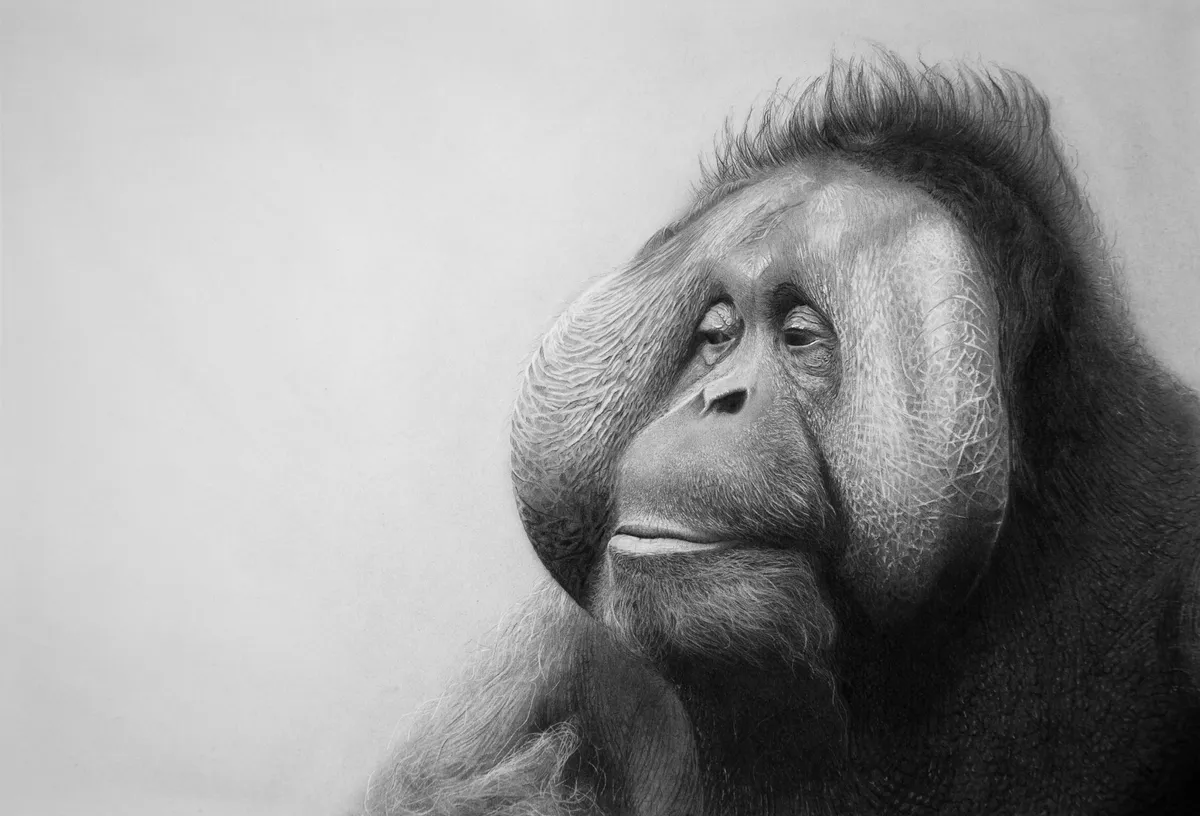
“I created this piece to raise awareness for how devastating farming palm oil can be for the many speciies living in the forests in Borneo.”
“I wanted to capture a look of helplessness on the face of the orangutan and use the negative space to hint at a bleak uncertain future.”
“My inspiration for this piece is simple - to raise awareness of the impact that deforestation has on the world we live in. Losing the species that live within the forests is the tip of the iceberg.”
Judge's comment
Jamie Rountree: “A sense of loss, injustice or perhaps just world weary acceptance pervades the subject. This incredible work demands an emotional response from the viewer, whether it be sadness, pity or at the other extreme, anger. Any artist that can provoke these reactions should be very highly respected, especially where it concerns such a beautiful subject.”
The March, by Sophie Green
Artwork medium: Acrylic on Belgian linen canvas.
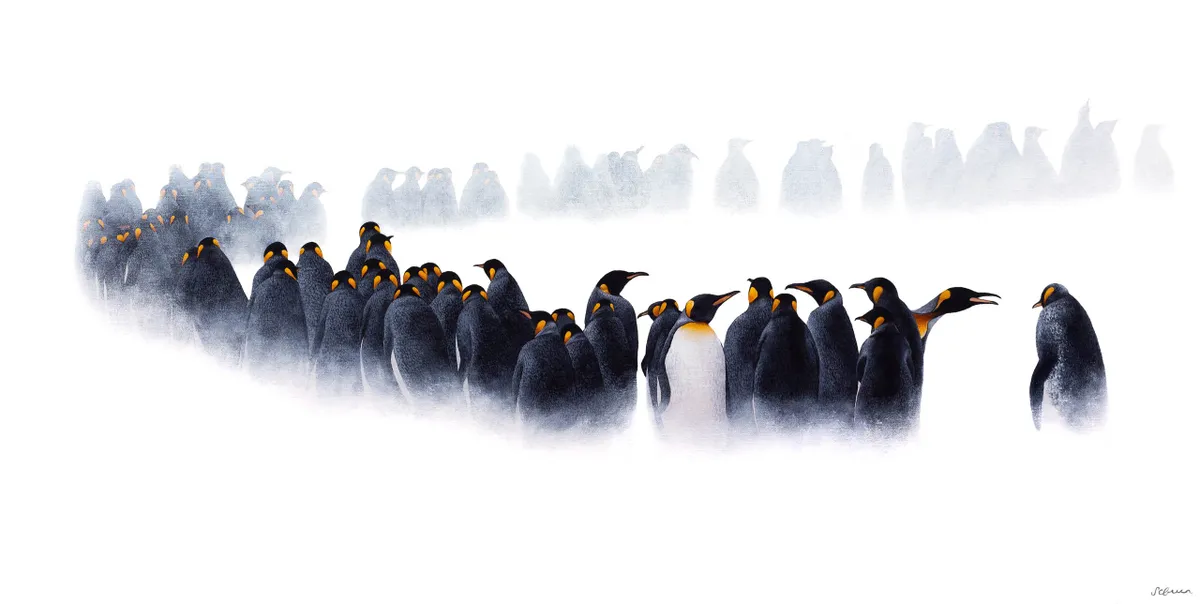
‘The March’ depicts the necessary, but perilous event of migration during a snow storm. Changes in temperature, food shortages or the need to mate, among other factors, make migration an important event.
However, it is usually long, arduous and full of difficulties – particularly for juvenile or older penguins, who may not survive the journey. ‘The March’ aims to draw the viewer’s attention to the individual penguins’ behaviour, as well as the dynamic of the group as a whole.
Judges' comments
Georgina Lamb: “This piece was unanimously loved and admired by the judging panel which is not often heard off. You can feel the cold and need to huddle in yourself when looking and appreciating this amazing piece. The use of white space and shadows as the penguins drift away from the view on their icy journey is beautiful executed and incredibly soft and considered in its delivery. A mesmerising piece that you feel deeply, and don’t just simply admire’
Jamie Rountree: “Wonderfully uplifting work that brings a smile to the face.”
New Forest Deer, by Cy Baker
Artwork medium: Biro and oil.
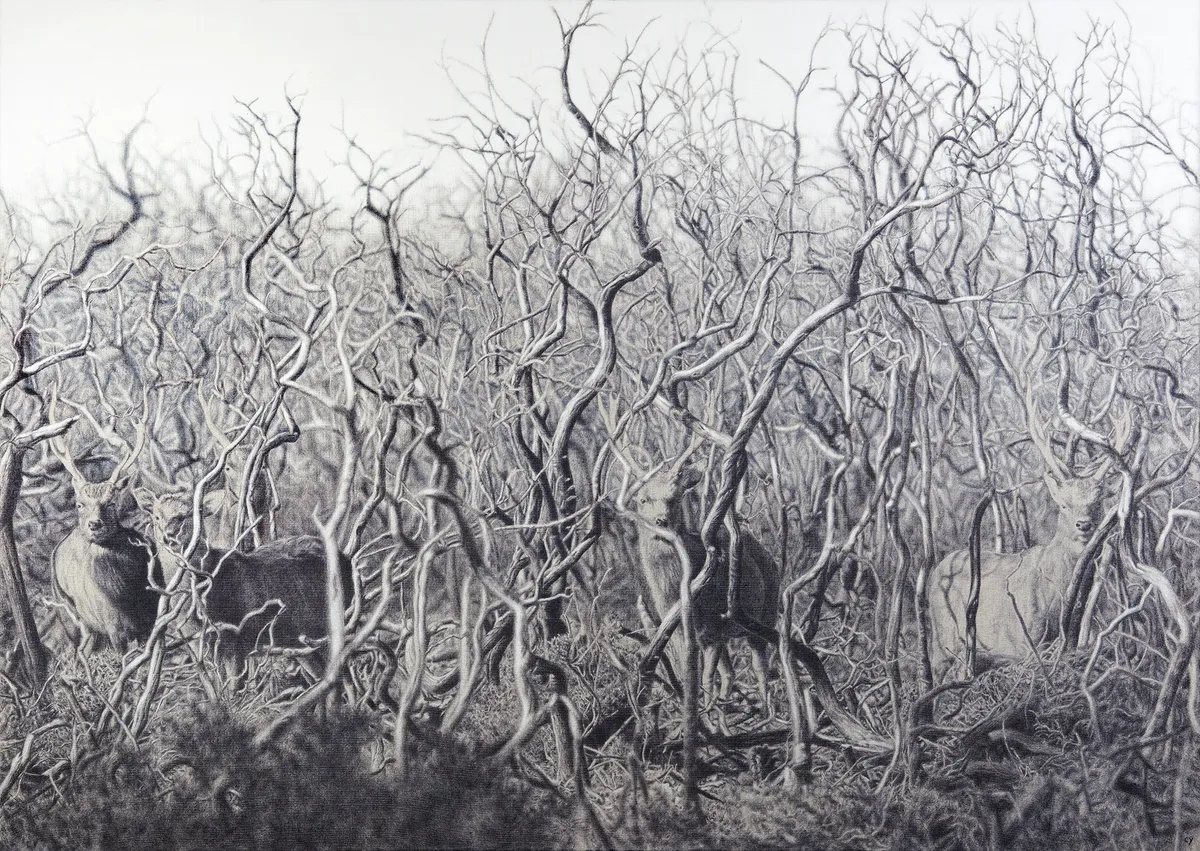
It was one of those rare moments where I instantly knew a piece of art just had to be done. We were walking in the New Forest and I spotted some shapes in amongst some burnt out gorse, that turned out to be a group of red deer, who no doubt had been watching us much longer than we had them.
I just love that moment you share with wildlife when you spot each other and lock eyes, truly wonderful.
There are actually six deer, although only a small part of the sixth can be seen.
Judge's comment
Hazel Soan: “The medium matches the subject perfectly here. The twisting interlock of branches writhes in a delightful dance of light and shade across the picture plane and for a moment the tangled depths hold us captive: the deer are momentarily still, but any moment they will turn on their dainty feet and skip away, but even then we will still enjoy exploring the intricate landscape.”
Golden, by Tamara Pokorny
Artwork medium: Scratchboard & inks.

Female golden orb weavers are fairly large and strikingly coloured spiders that live in warm climates around the world. Their golden hued silk orb webs can span over a meter, and are astonishingly stable. In this piece, I have depicted the spider and its web as it can be encountered in nature, for example across a forest path. In a backlit setting, both seem to vanish but for a few outlines that appear to glow when catching the light.
Judge's comment:
Georgina Lamb: “The light and depth of colour despite the pallet of this piece is exceptional. Not only is the medium of scratchboard wonderful, but to see it used with such delicacy is a true testament to the artist. You feel drawn in as would an insect to the web and get lost in the subtle balance between the background and web structure in the fore. The hint of gold around the spider completes the piece and brings it to life.”
Theory of Mind, by Emma Bowring
Artwork medium: Oil on canvas.
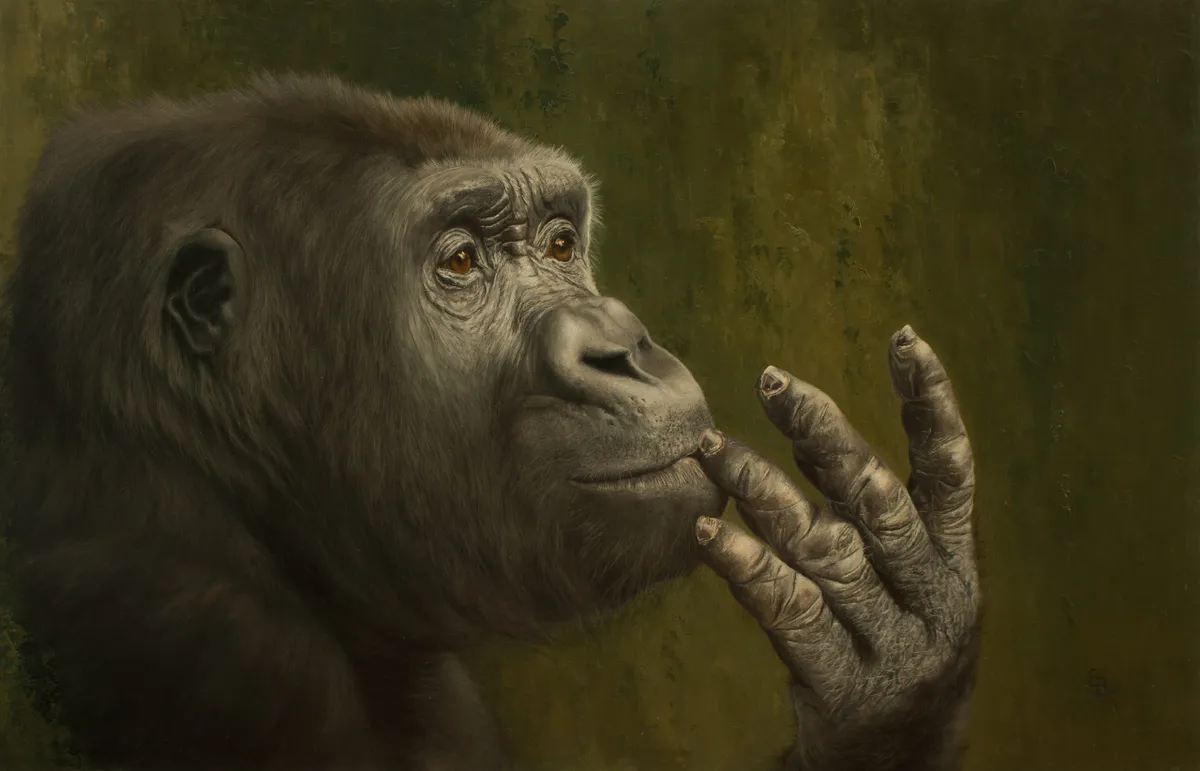
Recent studies may now have determined that great apes possess 'Theory of Mind' - the ability to understand that others have mental states, something once thought to be unique to humans, and indeed the thing that some feel actually makes us human.
With the current situation in the world, it is now more important than ever to re-evaluate our relationship with the natural world, and accepting that we are not alone, with regards the ability to feel and think, has to be part of that.
Judge's comment:
Georgina Lamb: “This piece spoke to each of the judges differently and connected with everyone for a wonderful variety of reasons which is rare! To instil such a positive reaction and connection from a piece shows real depth. This piece is more than art, its emotion and empathy wonderfully captured in beautiful painting. For me personally this painting was a reminder that as humans we should be softer, more considerate and kinder as a species like the subject.”
Okapi Study, by Justin Coburn
Artwork medium: Oil on linen board.
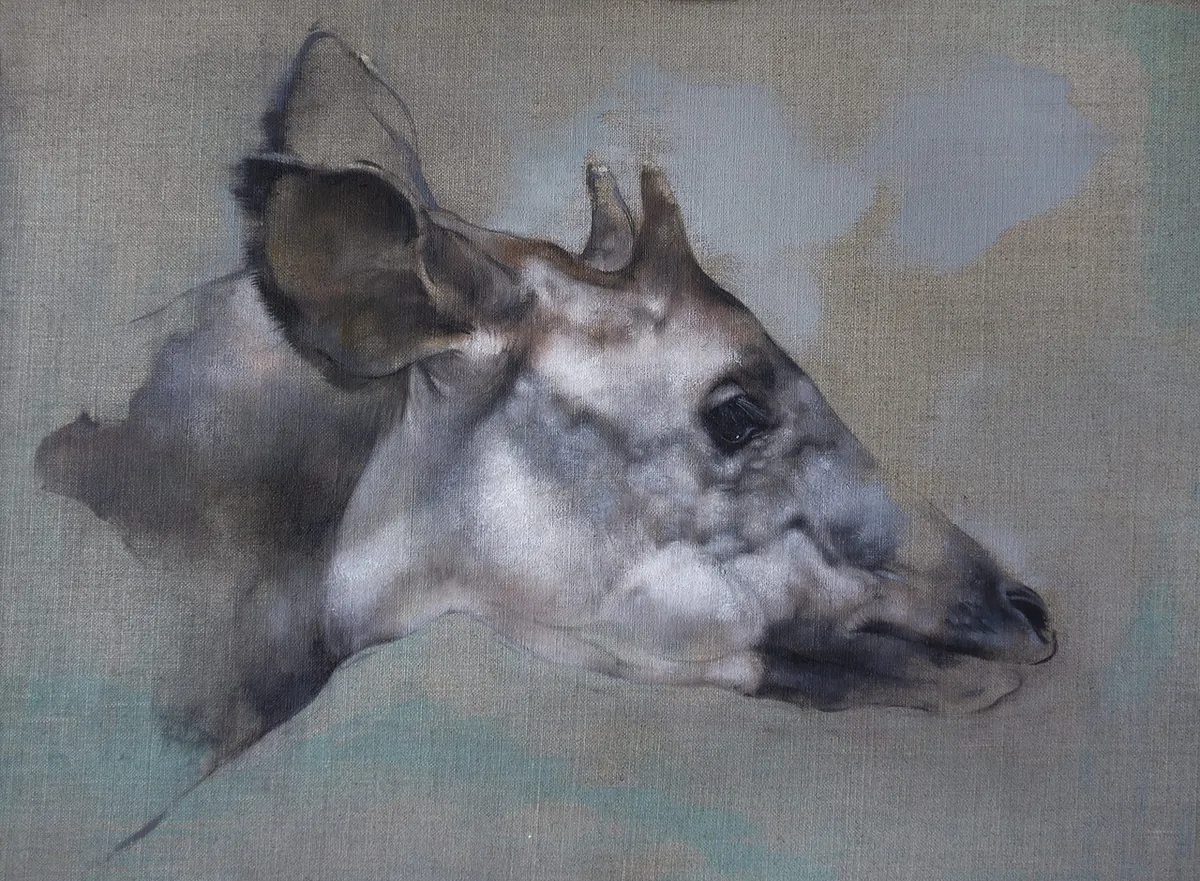
Judge's comment:
Hazel Soan: “A tender rendition of a shy antelope. The brushwork is so sensitive it feels as if the paint itself is a gentle caress. The skilled application of 'less is more’ has been applied perfectly here to fill the painting with genuine love and a sense of awe.”
The Sea Wolves, by Derek Robertson
Artwork medium: Oil on canvas.
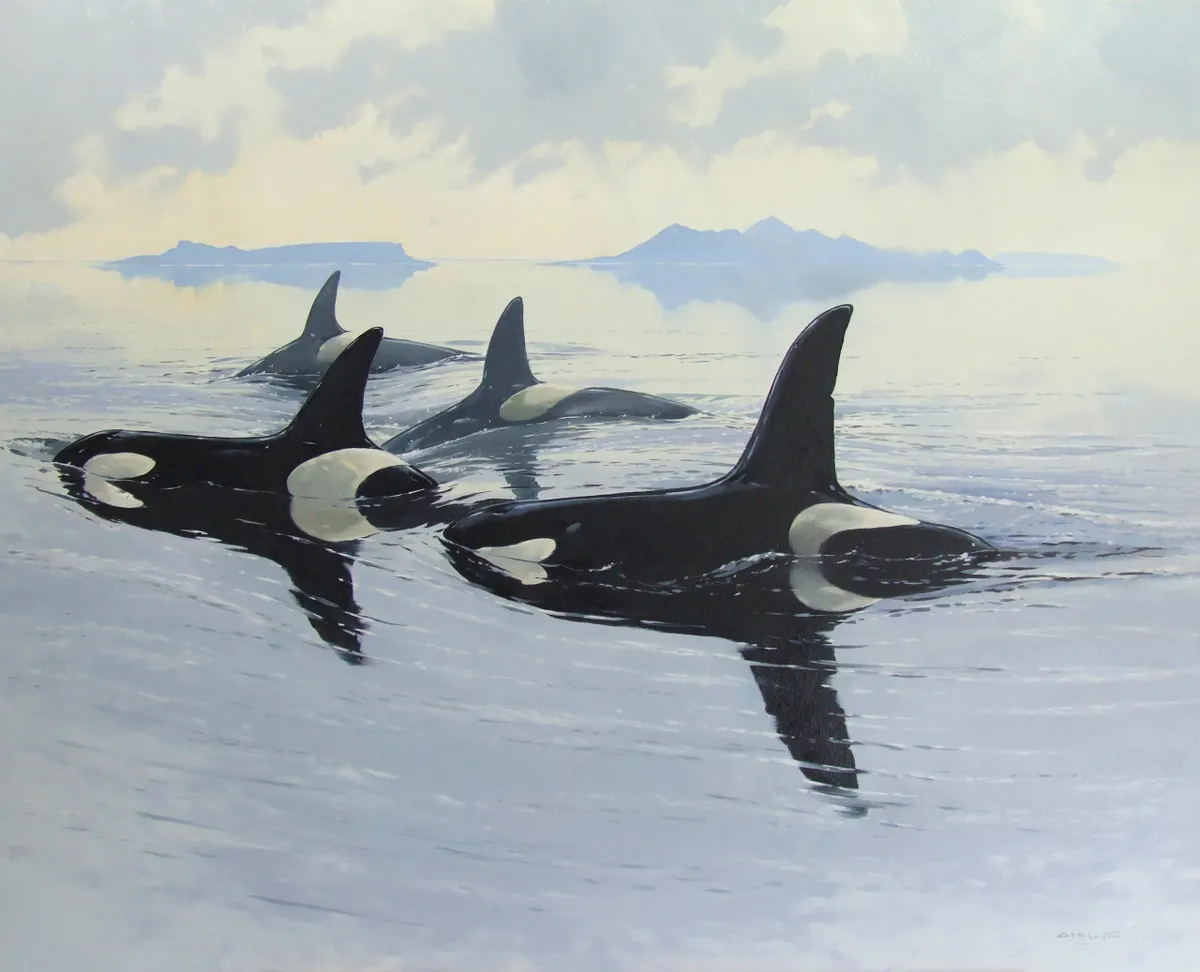
Painted from sketches of orcas off the coast of the Isle of Skye in Scotland, looking across to the Islands of Canna, Eigg and Rum.
The resident population in these waters has become endangered with just two individuals remaining but the numbers of transient pods has increased and they are now seen regularly. The population changes depict our successes and failures in conserving marine ecosystems and as top predators in the foodchain, the orcas are a sensitive weathervane to how our seas are changing.
Judge's comment
Hazel Soan: “If anyone could attempt to represent Einstein's theory of relativity in a painting, this is it! With his aerodynamic composition and the glassy lens-like water, Derek visually confirms that the more massive an object the more it warps the space around it! Here matter and energy appear interchangeable and the painting definitely exerts its own gravitational pull.”
Plenty More Fish in the Sea, by Martin Aveling
Artwork medium: Pastel pencil drawing.
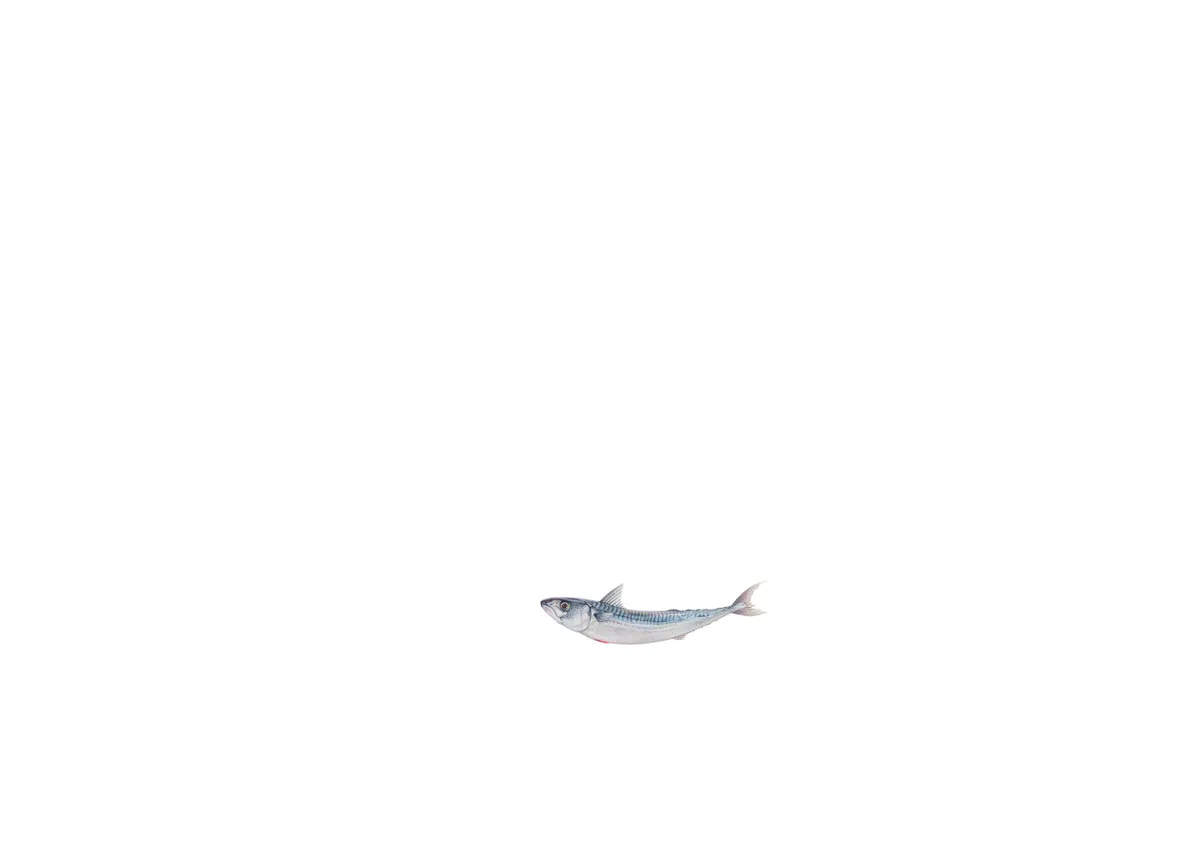
Whatever one's view is of the film 'Seaspiracy', it has to be applauded for lifting the issue of destructive fishing out of the conservation echo-chambers and into the public consciousness at large.
I have long felt that communicating this particular issue is difficult, what for the old adage 'out of sight, out of mind'. With this piece I pushed the limits of what is possible with negative space and used that to act as a metaphor for how humanity has treated our world's oceans.
Judge's comment
Georgina Lamb: “The use of white space in this piece is as bold as it is playful and appealing. Taking a well know phrase however and turning it into an environmental statement is powerful and to use such a stark image to represent this is brave. My grandfather, David Shepherd, would have been proud of this piece and the message its portraying. Despite the size of the actual subject its wonderfully detailed. Sometimes less is more, and in this case that has been wonderfully proven.”
Polly Joke at Low Tide (Cosmic Cat), by Jojo Blacksmith
Artwork medium: Oil on canvas.
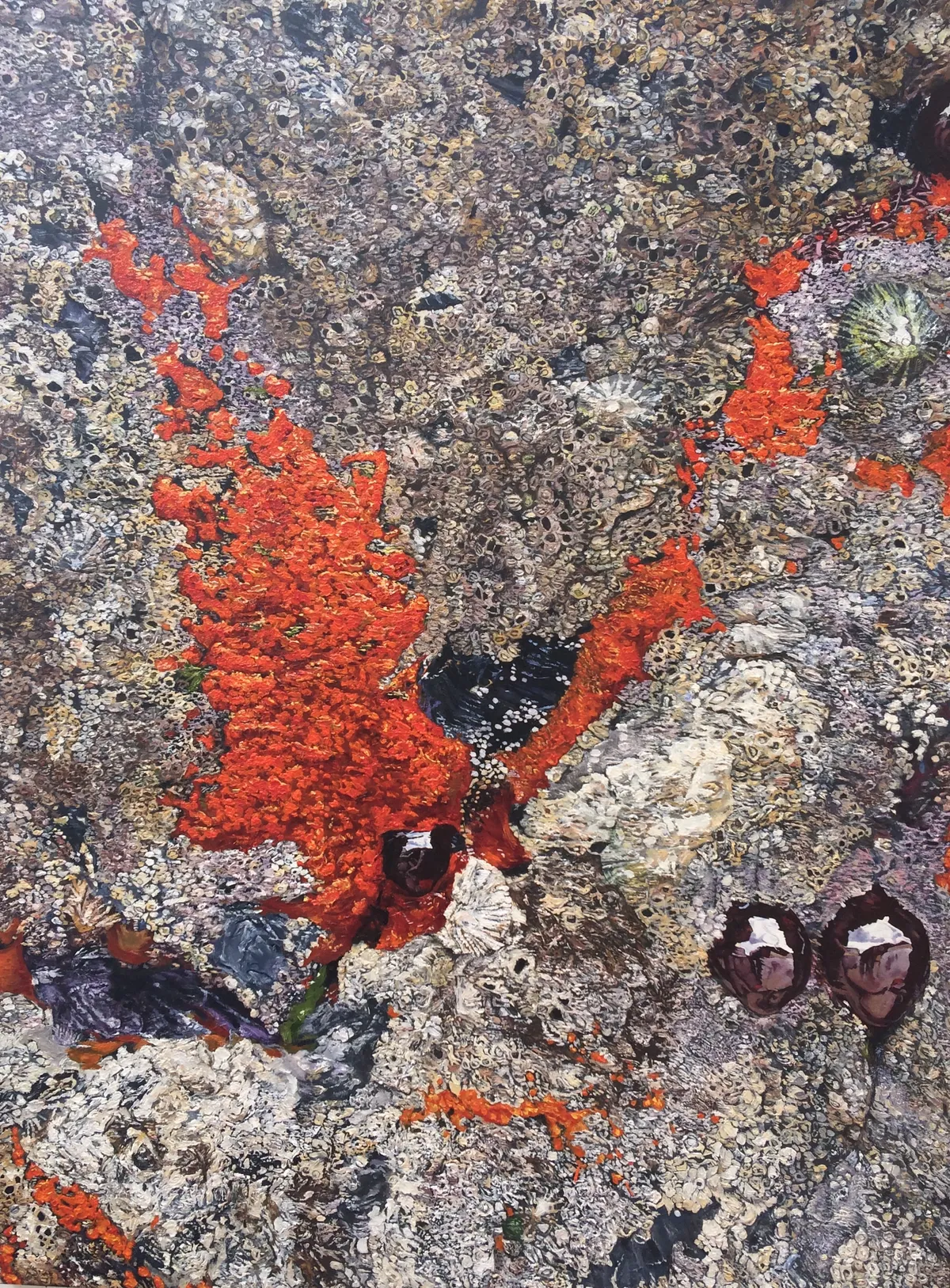
The painting is of the lifeforms found on rock surfaces at low tide at Polly Joke Beach, on the North Cornwall coast, south west England, and close to where I live. The lifeforms featured are barnacles, limpets, beadlet anemones and the orange sponge hymeniacidon perlevis. I am interested in the complexities of colour, texture and pattern found in the natural world of my local environment. I use photography to record and frame my subjects within abstract compositions. I translate the photographs into paint, using a range of techniques in each painting, building up the surface to create rich and detailed images.
Judge's comment
Georgina Lamb: “Despite the more unusual subject matter this has to be my personal favourite in the show. The texture and detail of this piece is outstanding. The colours are vibrant and rich and make me want to reach in and run my hands over the rough textures. The subtle depth of the rock crevasses, the shiny jelly like anemones and undulating mass of limpet shells and others sea life celebrated in one small space and piece is beautiful. This artwork is teaming with life.”
Keeping Up Appearances, by Emma Swift
Artwork medium: An oil painting on canvas.
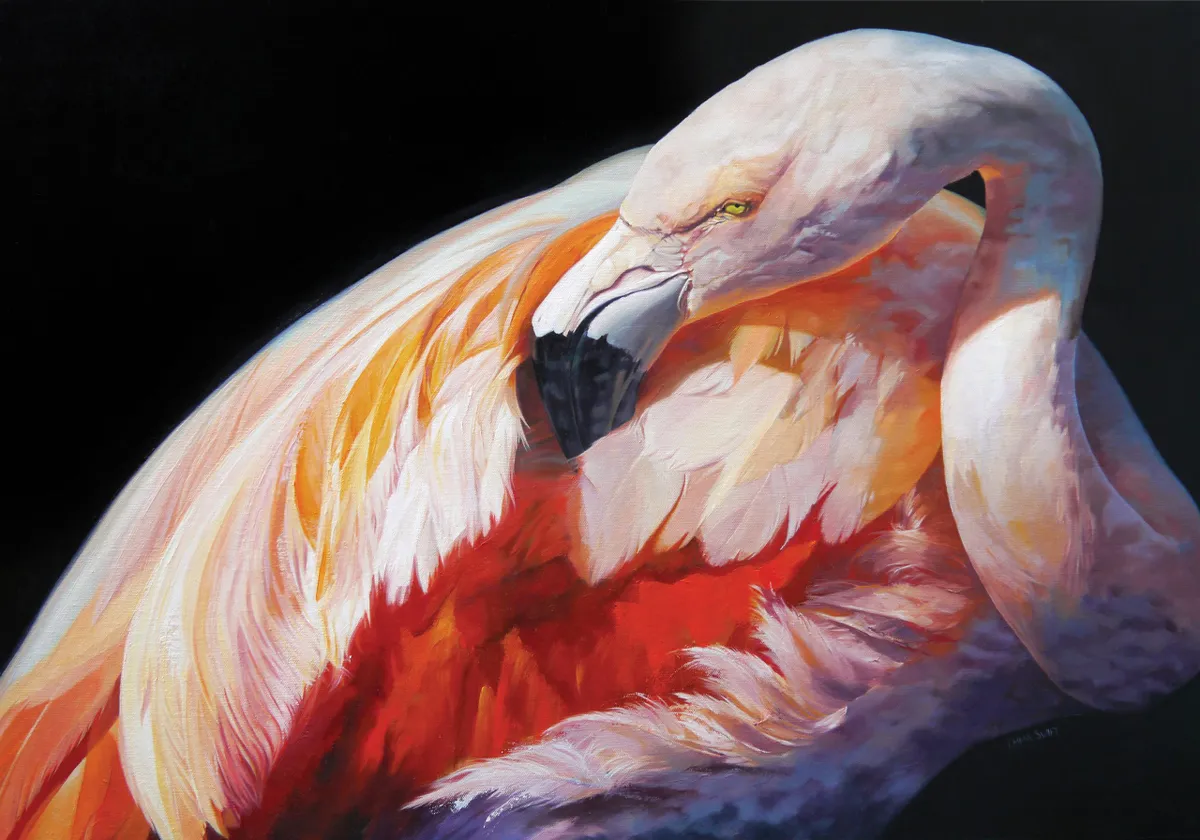
Out of a flock of flamingoes - a mass of pink plumage, big bodies, twiggy legs and long necks - one individual stands out, highlighted in contrasting light. The close crop focuses in on this immense and distinctive beak performing the delicate process of preening.
Much time is spent maintaining feathers, removing dusts and pests, realigning each barb, and applying oil for waterproofing.
The complexity of feather layers on any bird are incredible, but on the flamingo this moment also reveals the layers of colour - from white to pale pink, from vibrant orangery red to black.
Judge's comment
Georgina Lamb: “This painted took mine, and many other of the judges, breath away. Its rich and vibrant, powerful and soft. You can feel the texture and patterns in the piece which takes an already stunning muse and makes it painterly in the most wonderful of ways! If this piece could get a highly, highly commended it would have!’
Whale Sharks in the Mauritius Oil Spill, by Yael Orlovsky
Artwork medium: An acrylic and oil painting on canvas.
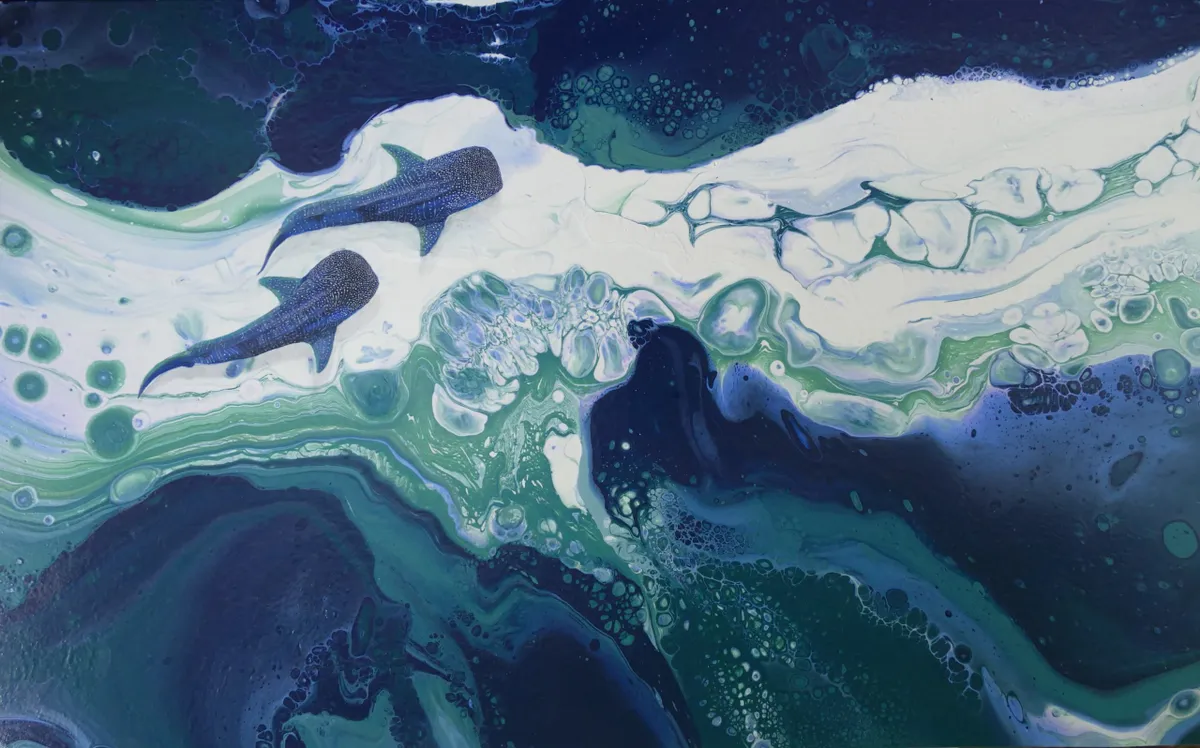
In July 2020, the MV Wakashio ship crashed in to a 1000+ year-old fragile coral reef in southern Mauritius with the largest brain coral in the Indian Ocean. In a matter of seconds, the whole ecosystem was damaged.
The intention behind this painting is to present the pristine turquoise waters with the devastating contrast of the toxic oil, intertwined with the marine life that suffer the consequences of human mistake.
Judges' comments
Georgina Lamb: “The judges were immediately and unanimously taken with this piece, not only for the beautiful execution, colours and aerial perspective but also because of the hugely powerful message about the impact heavy marine traffic, industrial pollution and oil spills have on marine life and our oceans. The artist took an important and ugly message and still managed to create a stunning and beautiful visual piece.”
Richard Eccleston: “Clever use of oil amongst the acrylic to emphasise the threat of the recent oil spill, but is beautiful at the same time.”
Plastic Taste, by Sarah Zeng
Artwork medium: A watercolour painting.

Judge's comment
Emily Lamb: “Sarah’s piece was one of my favourites in the entire show. It’s everything in one painting. Story-telling, creative, powerful, sensitive and inviting. The judges were all enthralled by it and I’m sure many many others will be too.”
Here's Johnny! by Tom Middleton
Artwork medium: Graphite and charcoal.
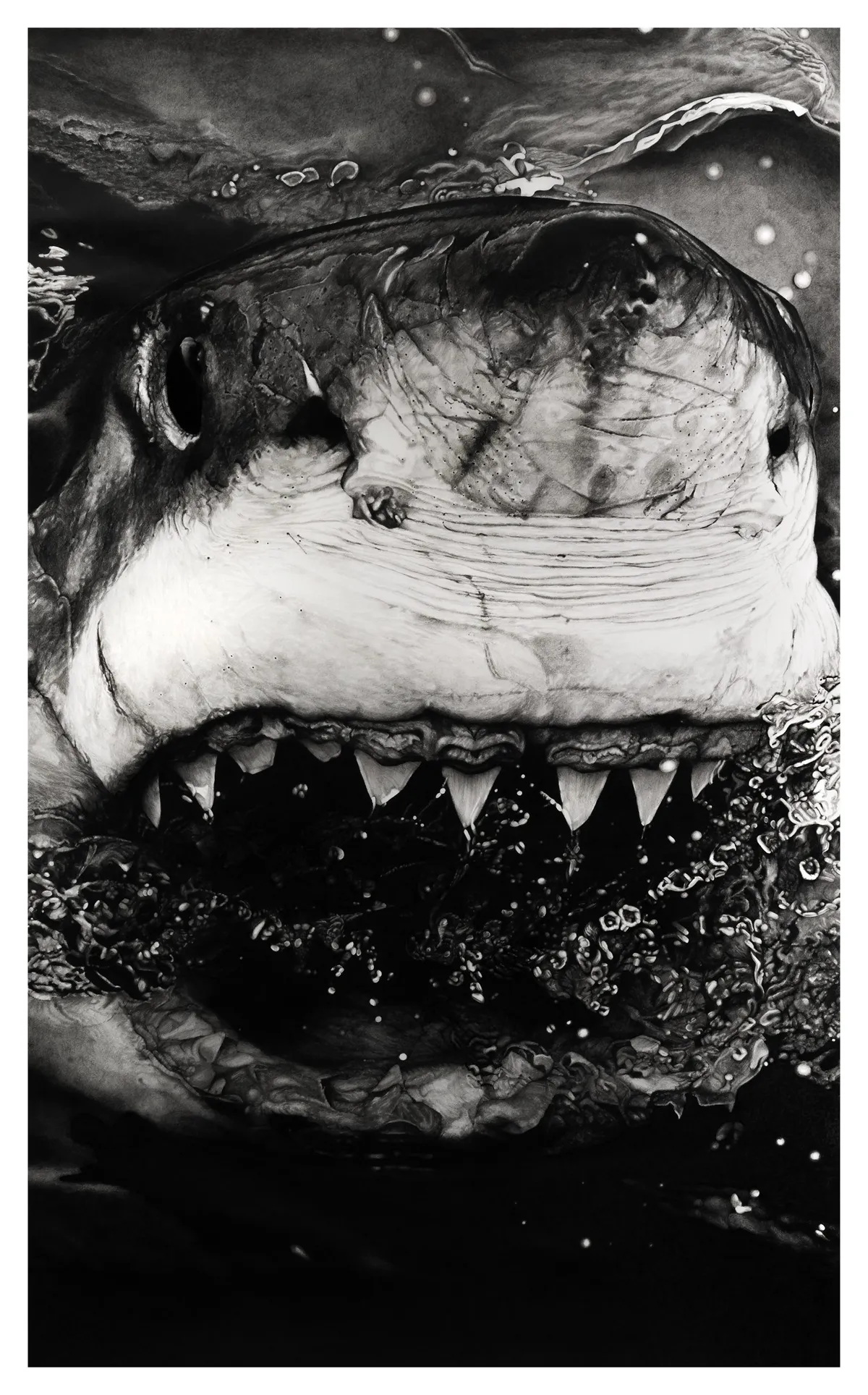
Created purely by eye (no grids), in graphite pencil to give the sheen and shimmer of water, in contrast to the shark’s eye.
This is produced using charcoal, allowing the surface to remain matt, black and very dense looking against the metallic shine of graphite. Meaning, wherever you stand in the room the eye will remain fixed on you, against any play of light.
Judge's comment
Georgina Lamb: “If I hadn’t seen the process behind this piece, I would struggle to understand how this was artwork and not reality. The movement and exact moment captured by this piece is powerful and thrilling. The level of detail in both the water and of the great white shark are simply outstanding. The angle and perspective is one of the most interesting shark pieces we have ever had in this competition for me and shows real skill in being able to capture such a dynamic moment. Wow!”
Bonobo, by Sophie Standing
Artwork medium: Textile embroidered art.

The background is unbleached cotton canvas which I have eco/botanical dyed, which is created by steaming the rolled canvas with African leaves inside for approx 3 hours with a mordant, it leaves the print of the leaves on the fabric by way of the tanninsin the leaf.
The bonobo itself is made by appliquéing cotton fabrics (Liberty tana lawn) and then thread painting the details of the animal with cotton thread using a free motion technique on my sewing machine. No bleach, no pen, no paint. All fabric and thread.
Judge's comment
Georgina Lamb: “To see not only such a stunning subject but medium used to create this piece is wonderful. How one creates such magic through the use of textile embroidered art astounds me. This is a piece of art worthy of any wall. The vibrant underlay of colour, pattern and depth used on the Bonobo elevates this piece to a different plane. I want to explore every aspect of this pieces in great detail and consume every part of it. I’ts stunning and vibrant all whilst being soft, venerable, delicate and enthralling at the same time.”
2020, by Jean Francois Gambino
Artwork medium: Bronze.
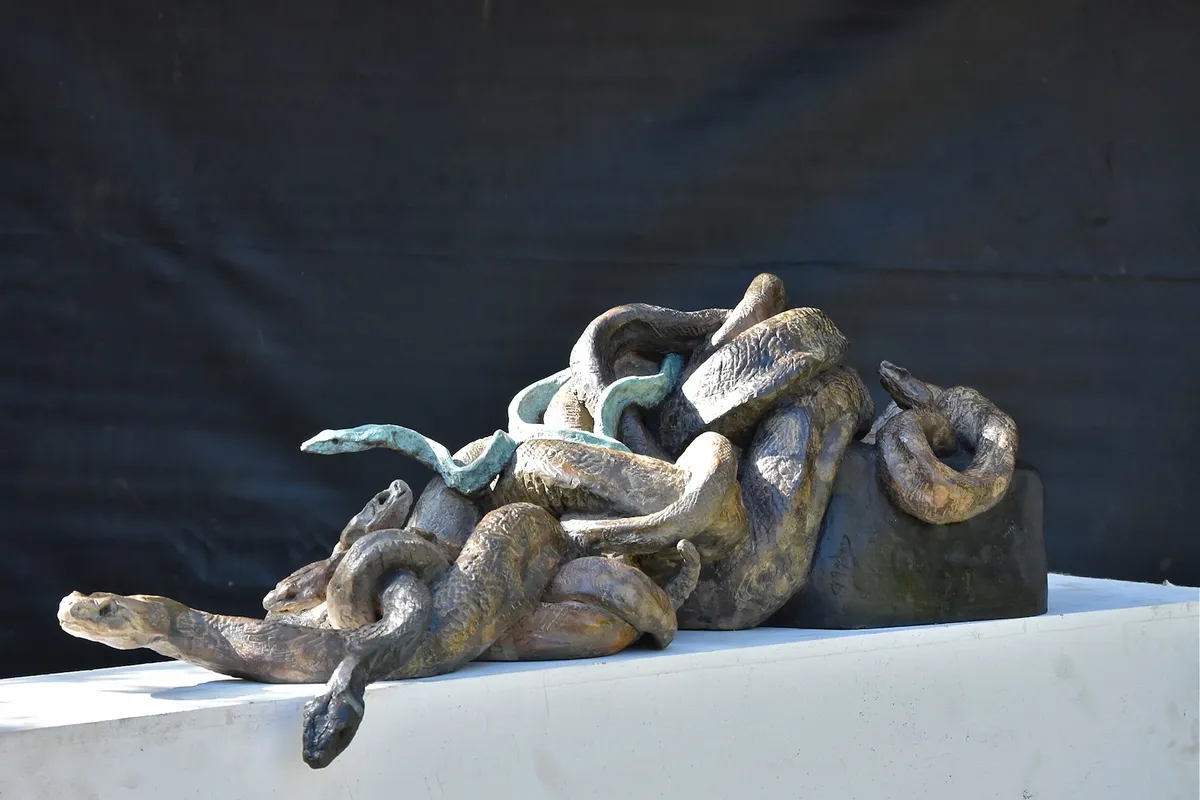
Judge's comment
Georgina Lamb: “I keep finding myself drawn back to this exceptional piece. The movement and composition is both stunning and unusual. The texture green patina of one snake is captivating. Its presence feels wonderfully heavy but lithe and nibble all at the same time. A truly exceptional bronze sculpture.”, highlighted through the writhing pile of snakes with the contrasting brighter.”
Isolate, by Emily Pooley
Artwork medium: Acrylic painting on thick MDF wooden board.
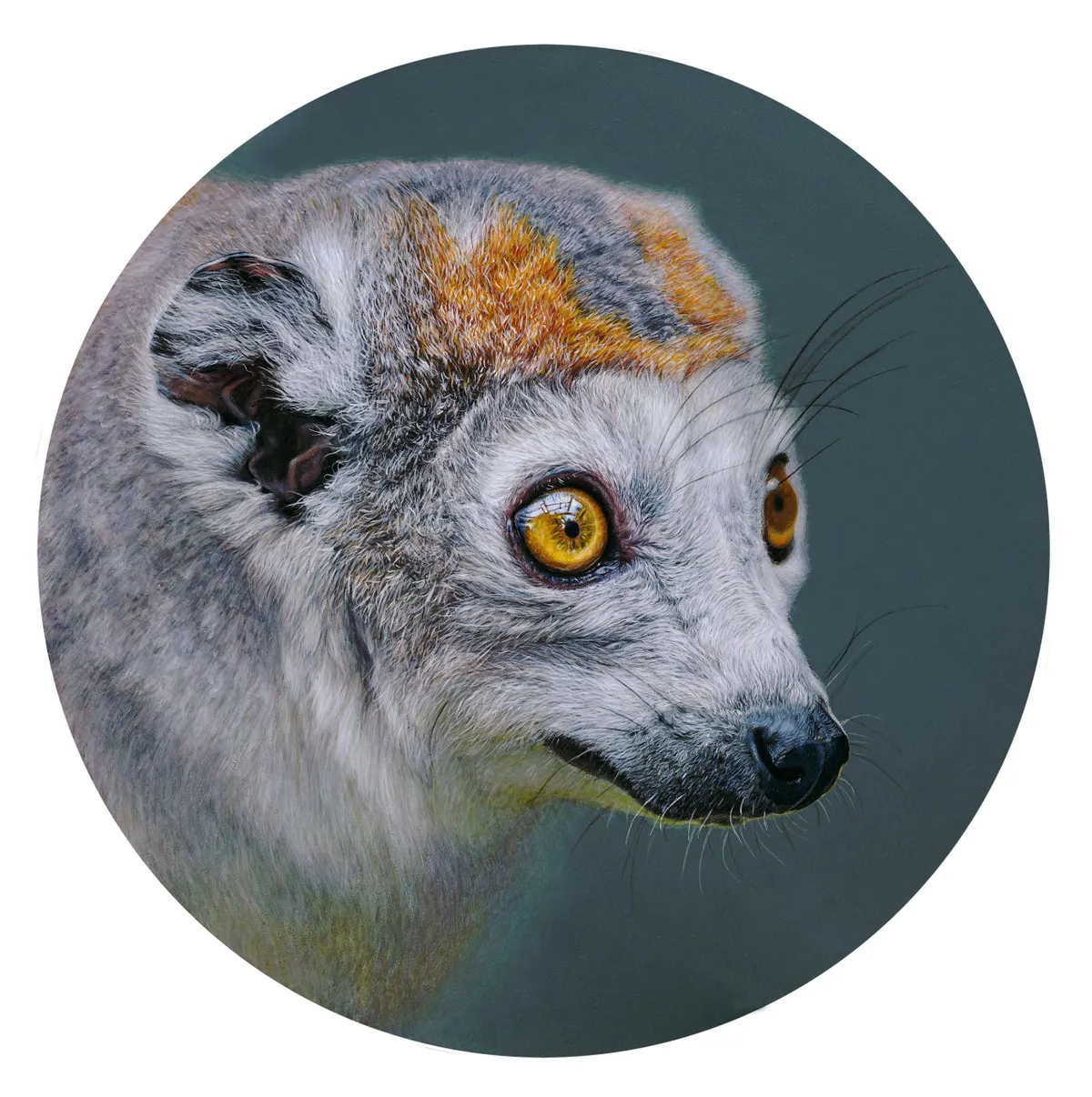
A intimate hyper-realistic acrylic painting of a female crowned lemur. This piece is a tondo (round painting) giving it a unique appearance and drawing the eye into the subject.
The piece is on thick MDF board and can come with a fitting to allow it to be mounted directly onto a wall if the buyer does not wish to frame it. (Framing recommended to protect it, custom frame needed for shape and size).
If you look closely at the eye detail, you can see the reflection of the zoo enclosure that this female lives within - we must look past our wildlife's beauty and look to their situation and what we can do to help.
Judge's comment
Georgina Lamb: “The exquisite detail in this piece is exceptional. To have captured such sensitive detail shows an extraordinary level of skill and understanding of both technique and subject. This isn’t just a highly realistic portrait but one that shows a depth of character and personality far beyond a traditional portrait capturing the species essence and inquisitive yet delicate nature”
Hope, by Farnoush Mansourpour
Artwork medium: Graphite and charcoal.
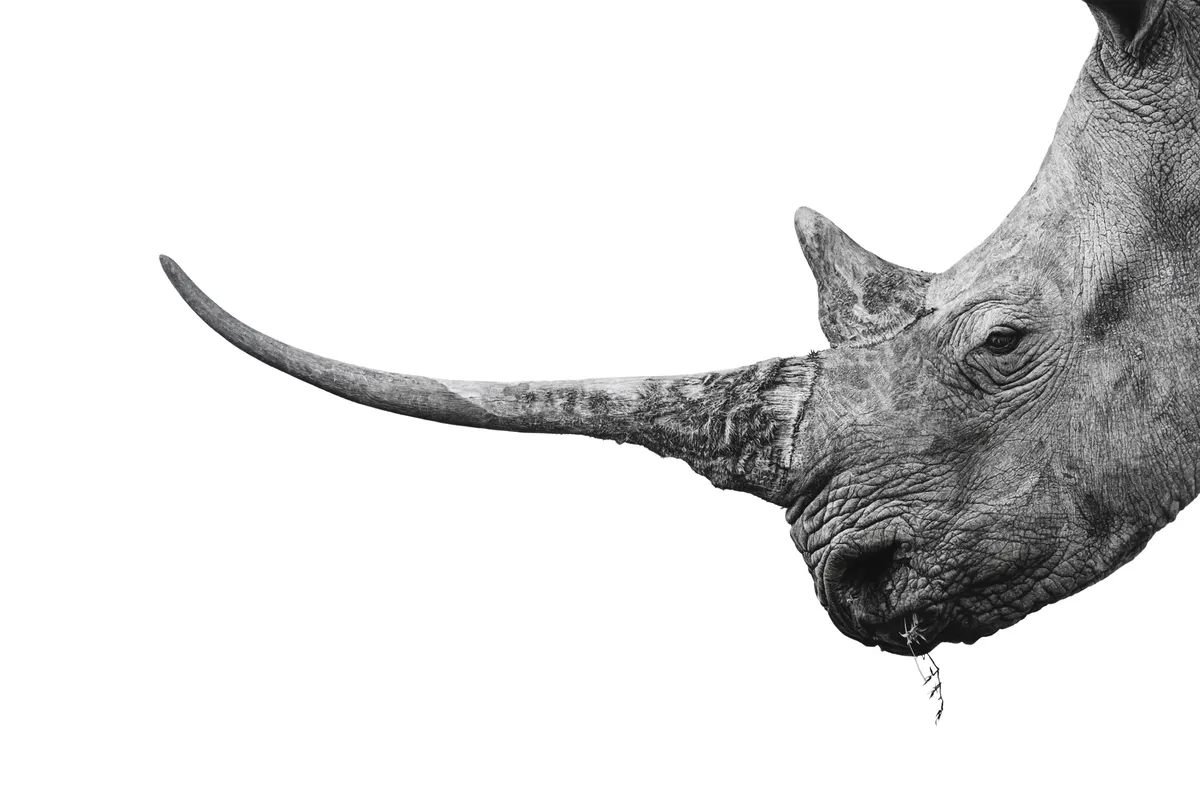
Being attractive, exciting, technical, arduous, or time-consuming is not essential for an object or creation to be considered as an art. Art is anything that helps the growth of human consciousness.
Judge's comment
Georgina Lamb: “Everything about this piece is beautiful; the execution, the placement, the use of white space, even down to the delicate blade of grass coming out of the rhinos mouth. This is an artist who has clearly studied this species and managed to capture every wonderful nook and cranny, fold of skin, flake of horn in incredible and mesmerising detail. I am drawn in to looking deeper every time at every pencil mark and line.”
Ice Bear, by Veronica Dance
Artwork medium: Stone, white alabaster boulder on a slate base.
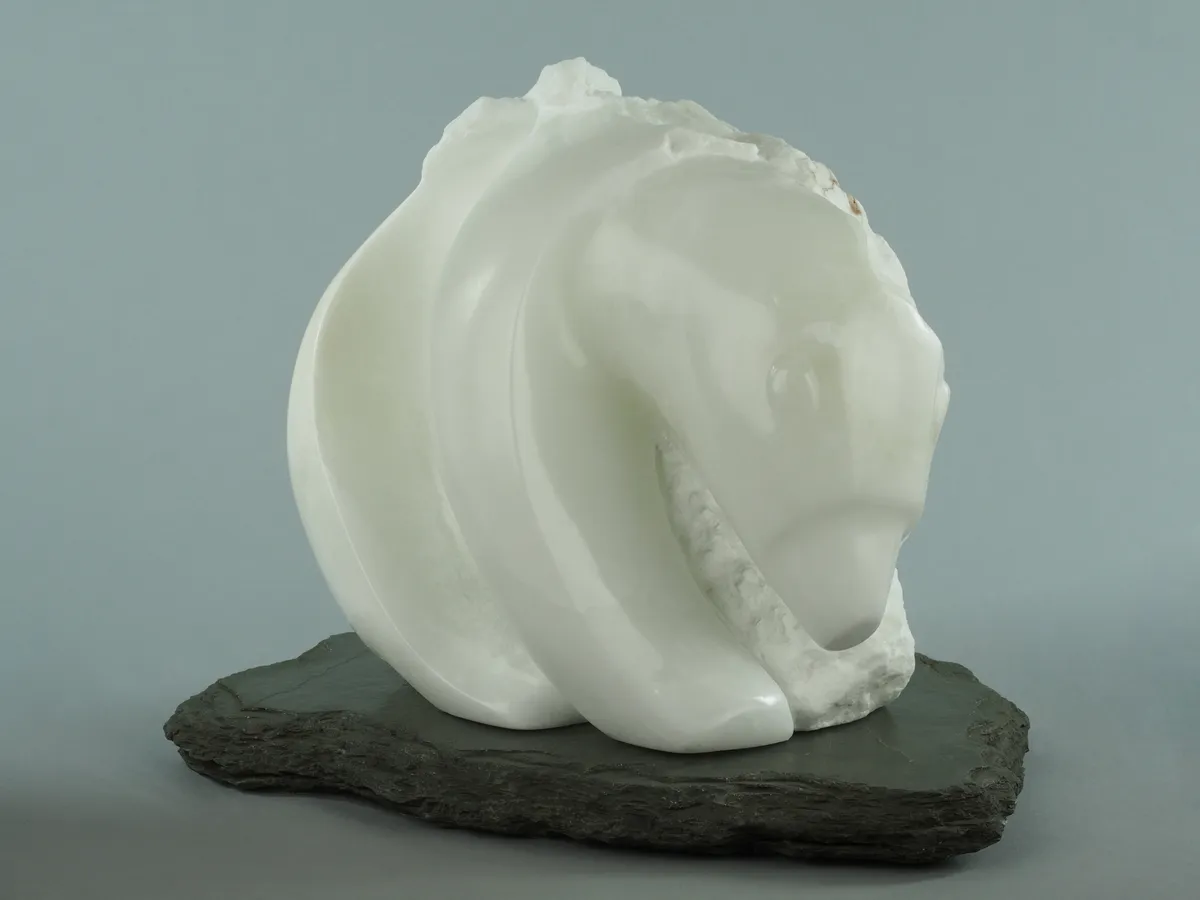
Mostly carving from irregular shaped rock, I often see an animal or design in the shape and colour of the stone. The polar bear appeared to me in this beautiful, white, alabaster boulder, and was never going to be anything else.
The strong, simple shape of polar bears inspired me to create a striking, unique, stylised sculpture. As I began carving it, I decided to leave part of the rock natural to display the unique material and to suggest an association with ice, the fragile balance between the bear and its environment, melting ice, and disappearing ice and bear.
Judge's comment
Richard Eccleston: “Gorgeous art deco feel, love the way the bear literally emerges from the landscape.”
Topi & Guinea Fowl Among the Mighty Baobabs, by Colette Clegg
Artwork medium: Acrylic paint, collage & drawing on a wood panel.
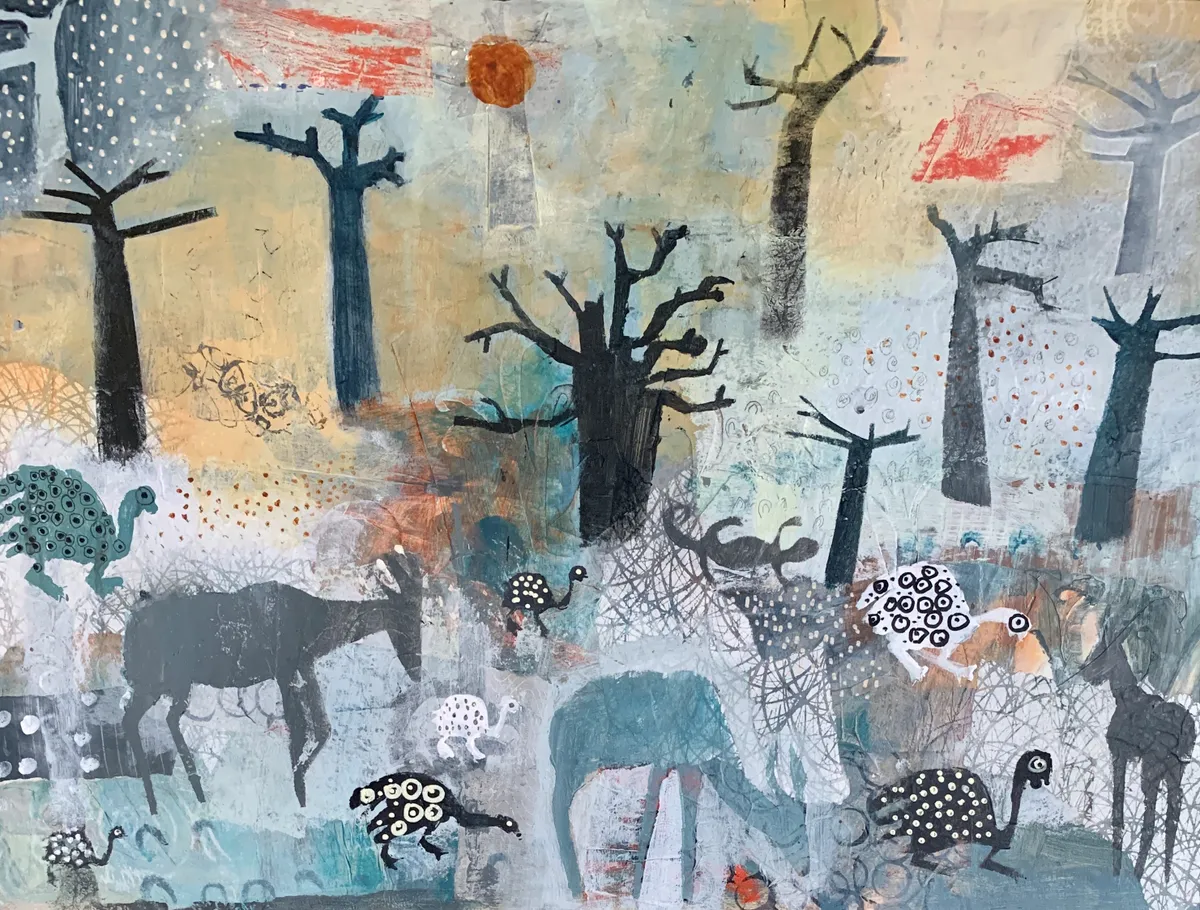
This painting was influenced by a trip to Botswana with my family. I used the earth triad colours of Payne’s grey, yellow ochre, burnt sienna with black and white and some orange.
It was created with acrylic paint, collage and drawing on a cradled wood panel. The light in Botswana has a very special quality in the early morning and evening which casts a golden glow over everything.
I made stencils because it best enabled me to best convey the ghost like quality of the animals moving through the vegetation. I was trying to capture that magical feeling.
Judge's comment
Richard Eccleston: Powerful and imaginative piece gives a fantastic sense of place.
Herd Instinct, by Rosamond Lloyd
Artwork medium: Bronze.
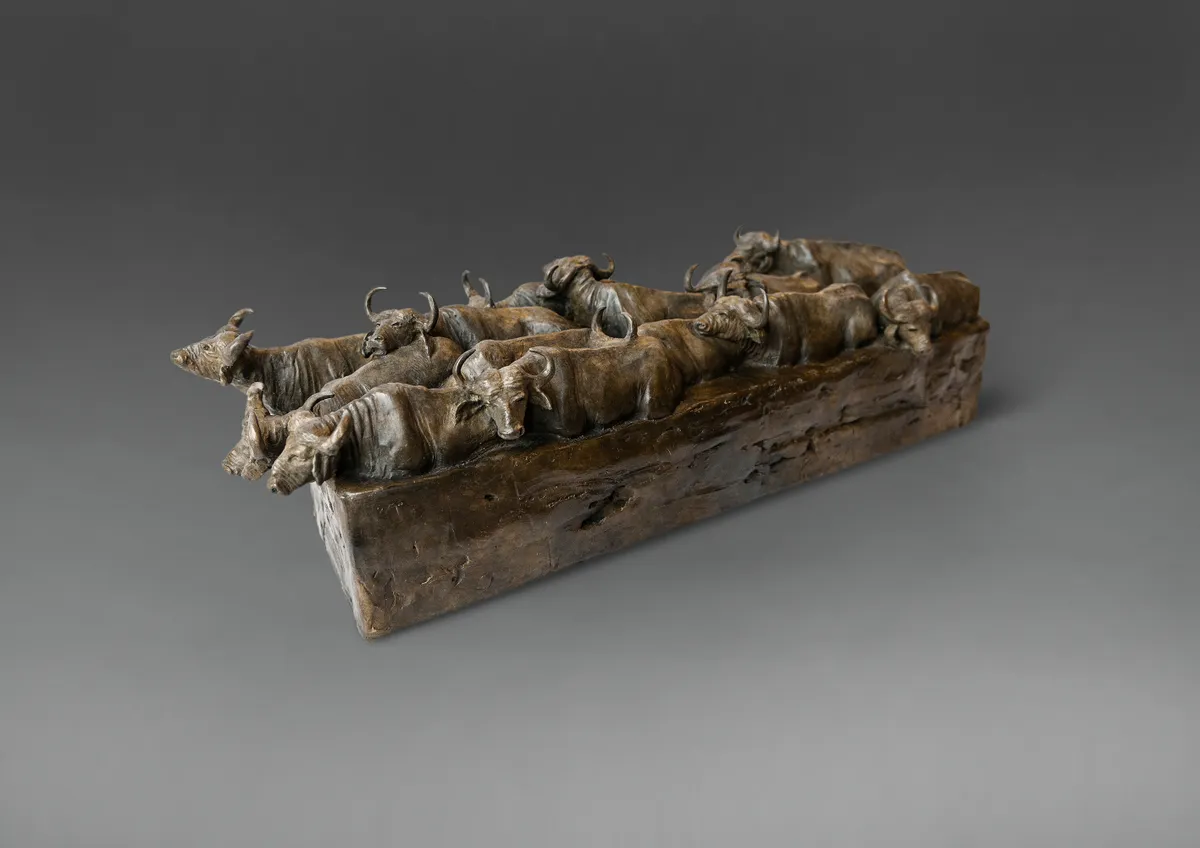
Study of a herd of Cape Buffalo on the move.
Rosamond’s sculptures are emotive and highly personal, reflected in the very limited number of editions produced of each piece. Her work is held in national and international collections and has been widely exhibited, with collaborations including a highly acclaimed London show with best-selling author, explorer and photographer Levison Wood.
Judges' comment
Mandy Shepherd: “A fabulous and very original piece and for all its complexity and perspective it is a simply beautiful and entirely convincing piece of art.”
Melanie Shepherd: “This wonderful bronze of buffalo charging has a chaos and strength that are key attributes of this magnificent beast and Rosamond has so cleverly sculpted this scene in such an unusual way.”
Scarlet Macaw (Ara Macao), by Scott Mitchell
Artwork medium: Oil.

I had always wished to try my hand at painting feathers, and the stunningly vibrant colours of the Scarlet Macaw seemed the perfect opportunity.
Additionnally, since I am typically aa pet portrait artist and only recently branching out into wildlife art, it gave me the opportunity to explore these animals, natural behaviours in the wild which is new for me to capture in my paintings and adds on extra layer of excitement. Unfortunately, due to deforestation and the exocitic animal trade, more countries are starting to consider these beautiful birds as endangered.
Judge's comment
Simon Trapnell: “My memories of my travels in the rainforests are as much about the sounds I heard and the bustle and cacophony of life, as the flashes of colour and the sights that I saw. I can hear the macaws in this painting. Their squawks and screeches energise my imagination and draw me in.”